
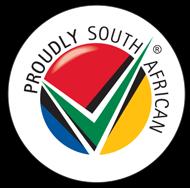
VISION
To promote sustainable Metals and Engineering industries to ensure that they are strategically positioned for innovation and growth in the interests of a prospering Southern Africa.

MISSION
To be Southern Africa’s most respected advocate for the Metals and Engineering industries in order to create innovative businesses positioned for growth and working in partnership with all stakeholders in the interests of Southern Africa.
To foster mutually beneficial relationships between employers and labour in the industries and to help members develop their human capital to realise their full potential.
VALUES
Integrity
Integrity is paramount to us. It informs everything that we do and how we do it.
Diversity
We embrace, value and leverage Diversity.
Excellence
We seek to do everything right the first time, with Excellence.
Stewardship
We take Responsibility for our actions and treat SEIFSA’s assets with respect.
Passion
We approach every task, however small it may appear to be, with Passion.
Innovation
We always strive to Improve our performance and to come up with new products and services.
A B

Section A Executive Reports Chairperson Chief Executive Officer Chief Operating Officer Financial Report About SEIFSA Administration Services SEIFSA Represantation MIBFA Report Social Responsibility Company Secretariat Marketing, Sales & Communications Economic and Commercial Industrial Relations Human Capital & Skills Development Safety, Health, Environment and Quality Section B Corporate Reports Section C Divisional Reports SEIFSA Board members Team SEIFSA Section D SEIFSA Board and Team SEIFSA CONTENTS
C
05 19 27 41 45 49 53 57 63 66 69 77 81 89 97 101 102
D C
Section A Executive Report A

CHAIRPERSON’S REPORT
The Metals and Engineering (M&E) sector remains a strategic sector of the South African economy. It is crucial in its capital intensity and contribution to the country’s investment prospects while also being a labour-intensive sector contributing to the employment prospects of the country. It has important direct linkages with the primary sector, other key industries and the tertiary sector of the economy, with the level of interdependence increasing over time. It is also a key avenue through which South Africa can convert its vast mineral endowment to final products.

5
Elias Monage President
The Steel and Engineering Industries Federation of Southern Africa (SEIFSA), through its representation of 18 employers’ associations in this sector, has advocated actively for these associations and lobbied for policies aimed at improving the business conditions in which its member companies operate.
This initiative is in line with SEIFSA’s main focus, which is to continue to build strong employer associations reflecting the views of their respective memberships and supporting the needs, interests and transformation objectives of responsible employers in the industry. SEIFSA is increasingly being relied upon to assist Government in navigating the plethora of challenges facing our economy in the face of local and international headwinds.
THE ECONOMIC LANDSCAPE
The M&E sector is a crucial supplier of inputs into major sectors such as construction, mining, automotive and other manufacturing subindustries and remains an integral part of economic and industrial development in South Africa. During the period under review the M&E sector faced enormous challenges both domestically and globally, with supply chain disruptions, declining market demand and disruptions in trade.
Even before the COVID-19 pandemic, the South African industrial economic landscape was dominated by shrinking domestic market size, declining production, low-capacity utilisation levels, declining employment numbers, increasing input costs impacting negatively on the cost base, increasing levels of imports, low investment levels, power outages, failing logistics infrastructure and corruption.
economy. On the domestic front, load-shedding and the rising cost of capital will taper domestic economic activity.
6
Following this strong start to the 2022 year, the global economic prospects in 2023 have deteriorated significantly, with implications cascading to the Metals & Engineering Sector. The themes dominating the global economy are the monetary policy tightening in the United States (and by central banks across the world, in line with the United States), disappointing Chinese economic recovery and the inflationary pressures that are not abating. All these events have adverse economic implications for the global
South Africa’s economic prospects have disappointed over the last decade. Real gross domestic product averaged 1.1% over this period. Total gross fixed capital formation contracted -0.9% (made up of general government investment -1.5%, investment by public corporations -5% and gross fixed capital formation by the private sector 0.2%), over this comparable period.
1.1% GDP
Real gross domestic product averaged over this period
-0.9%
GFCF
Total gross fixed capital formation contraction
These variables drive the metals and engineering sector’s performance, and the underperformance is evident in the production trends recorded in the sector. In 2023, the South African economy is expected to grow by 0.1%.
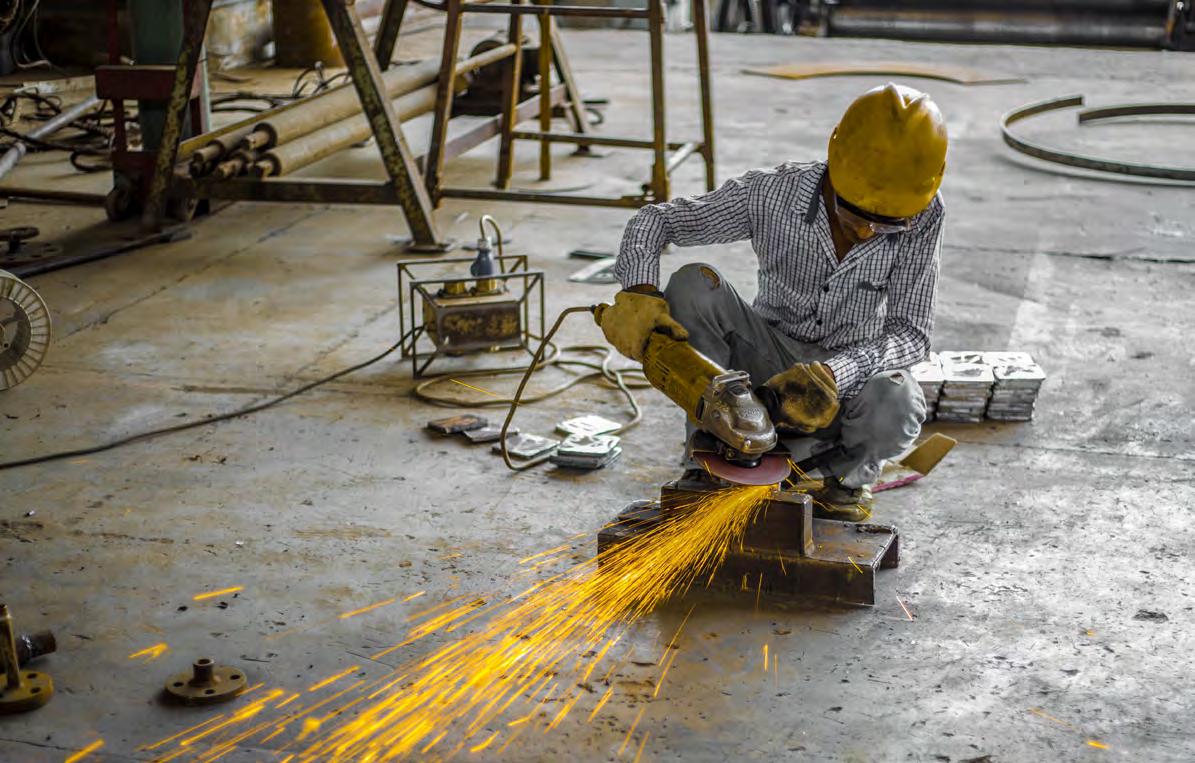
7
2022 Metal sector turnover
In 2022, the M&E Sector’s turnover was recorded at R914.2 billion and contributed R131.1 billion to the country’s gross domestic product. Exports amounted to R342.9 billion and imports R471.1 billion, yielding a trade deficit of R128.2 billion. The available calculations point to a 1.7% contraction in production for the Metals & Engineering Sector in the first quarter of 2023. For the full year 2023, the expectation is for a -5.3% contraction in production.
R914.2 Billion
M&E Turnover
In the first quarter of 2023, the Metals & Engineering Sector employed 374,496 people, according to the latest Quarterly Employment Survey (QES) released by Statistics South Africa. This is a marginal increase of 0.8% on the average employment of full year 2022.
R374,496
people employed according to latest QES
R131.1 Billion 0.8%
To country’s GDP
Marginal increase on average employment of full year 2022
R342.9 Billion R471.1 Billion
Exports
Imports
8
In the space of a year, the true cost of ongoing and persistent power outages on the economy are there plain for all to see. Rolling blackouts have contributed to severely impacting on the performance of the M&E Sector at a time when the economy was already in the doldrums.
To this end, South Africa will need to aggressively start repositioning its trading position by leveraging its position geographically to expand its industrial trading footprint in Africa, taking advantage of the African Continental Free Trade Agreement.
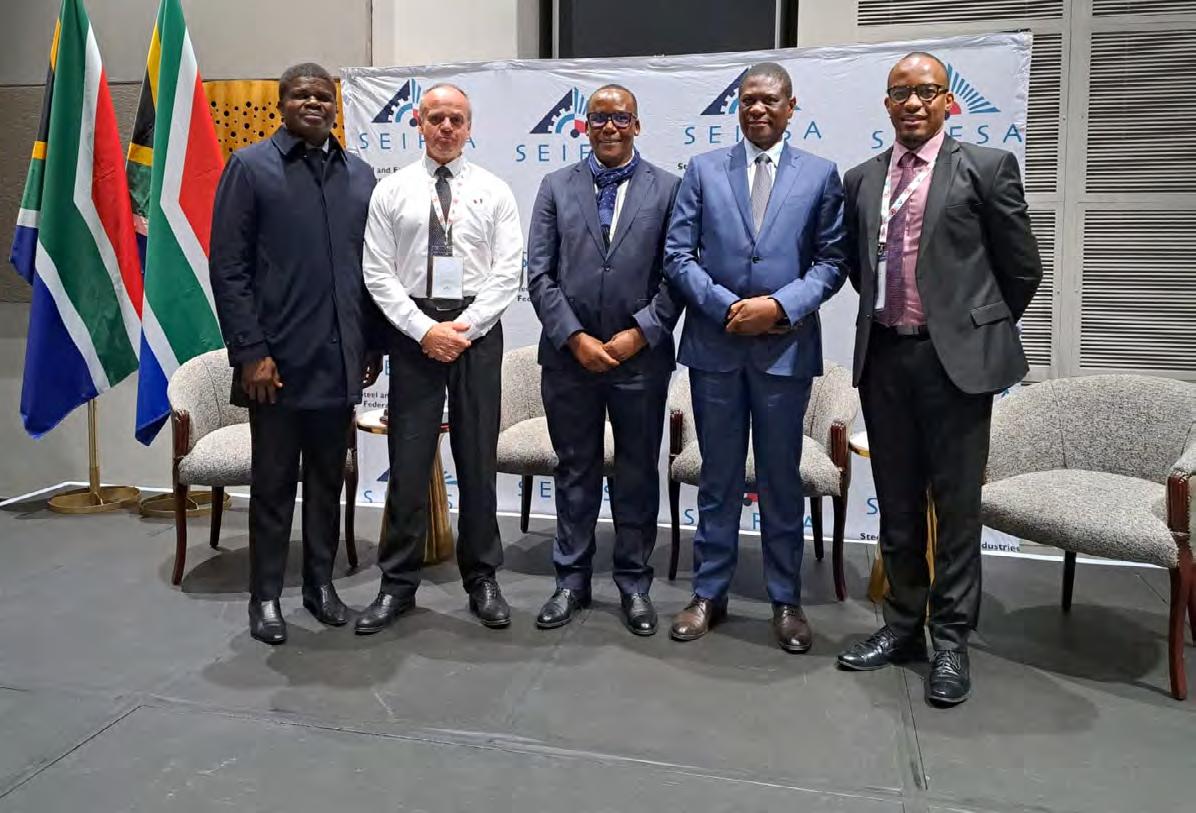
As the Government rolls out its various, longawaited, infrastructure plans and incentive programmes, locally owned companies should be prioritised. The Steel and Metals Fabrication Master Plan with the focus on increasing demand provides a glimmer of hope that the South African Government is finally dealing with the pressing challenges faced by the industry.
ADVOCACY AND LOBBYING
As always, advocacy and lobbying constitute an important part of SEIFSA’s work, in addition to stakeholder management and revenue generation. This work is done through participation in various fora involving a multiplicity of stakeholders, attendance of important stakeholder functions and events, through to the arranging of one-on-one meetings for SEIFSA and/or some of its member associations or companies. We also ensure that the Federation’s voice is heard on important matters with the potential to affect the economy and/or the Metals & Engineering Sector.
Through regular public interviews, weekly issuing of press releases and the publishing of analyses and sundry opinion pieces in various media, SEIFSA continues to strengthen its profile as the authoritative voice in the M&E Sector.
A separate, consolidated Advocacy and Lobbying Report is provided by our Chief Operations Officer, Tafadzwa Chibanguza, in this Annual Review.
The Steel Master Plan holds huge potential to trigger greenfield investment and demand for manufactured goods from the M&E Sector. Investment in the industry has been stagnant for many years, partly because of the lack of a longterm vision and sustainability challenges as profits dwindle partly due to lack of demand. Now, more than ever before, the importance of reigniting the steel sector and agreeing on concrete action plans to drive demand side measures remains of utmost importance.
The Steel Master Plan aims to reverse negative perceptions regarding the steel industry and address constraints to demand by prioritising designation and local procurement, localisation, public and private sector projects, transformation and competitiveness. These and other initiatives, as outlined in the plan, will ensure that there is increased output and demand for the M&E sector’s intermediate and final products.


 THE STEEL MASTER PLAN
THE STEEL MASTER PLAN
THE AFRICAN CONTINENTAL FREE TRADE AREA (AFCFTA)
Launched on 1 January 2021, the AfCFTA is an exciting game changer. The start of trading under the AfCFTA marks a new era in Africa’s development
journey. The creation of a larger African middle class means more consumption, which should trigger more production and even higher incomes on both national and individual levels. Currently, Africa accounts for just 2% of global trade. And only 17% of African exports are intra-continental, compared with 59% for Asia and 68% for Europe.
The potential for transformation across Africa is therefore significant. The pact will create the largest free trade area in the world measured by the number of countries participating. Connecting 1.3 billion people across 55 countries with a combined gross domestic product (GDP) valued at $3.4 trillion, the pact comes at a time when much of the world is turning away from cooperation and free trade.
The agreement aims to reduce all trade costs and enable Africa to integrate further into global supply chains – it will eliminate 90% of tariffs, focus on outstanding non-tariff barriers, and create a single market with free movement of goods and services.
Cutting red tape and simplifying customs procedures will bring significant income gains.
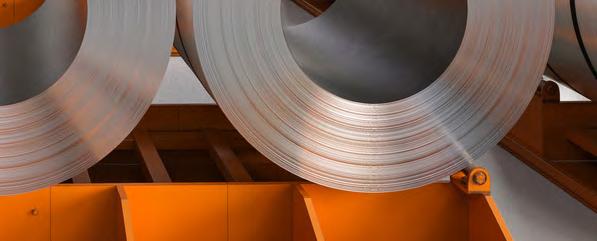
Beyond trade, the pact also addresses the movement of persons and labour, competition, investment and intellectual property. However, to overcome many current challenges, and to regain much of the ground lost in the wake of COVID-19, now is the time for more trade and greater cooperation.
When fully implemented, the benefits for the South African economy and the Metals & Engineering Sector in particular could contribute to addressing many challenges currently facing our sector, including production growth, productivity growth and reduced transport costs.
SEIFSA on behalf of its affiliated Associations will ensure that the voice of our membership is indeed heard on this important platform.
11 Africa accounts for just 2% of global trade 17% of African exports are intra-continental intra-continental exports in Asia intra-continental exports in Asia 17% 59% 68% 2%
BRAZIL, RUSSIA, INDIA, CHINA AND SOUTH AFRICA (BRICS)
BRICS is an acronym for the developing nations of Brazil, Russia, India, China and South Africa. China and India will become the world’s dominant suppliers of manufactured goods and services, respectively, while Brazil and Russia will become similarly dominant as suppliers of raw materials. South Africa joined the group in 2010.
In the 14 years since its first summit (2009) BRICS has become an institution of global economic governance and a platform for coordination and cooperation of its member states. The establishment of the BRICS Manufacturing Working Group (MWG) subsequently gave birth to numerous priority projects identified across a number of the sub-clusters of the manufacturing sector. Included in the MWG’s priority projects are Electromobility Solutions; Smart Cities, Light Passenger Aircraft Manufacturing as well Exponential Manufacturing, Bio-Plastic Technologies and Project Thuthukisa.
2020 marked the seventh anniversary of the BRICS Business Council, which was established to promote and strengthen business, trade and investment ties among the business communities of the five BRICS countries and ensure that there is regular dialogue between the business communities and the governments of the BRICS countries. SEIFSA participates in the Manufacturing Working Group of the SA Chapter of the BRICS Business Council.
It has been a decade since South Africa joined BRICS and while trade among BRICS nations has increased since the group was established in 2009, some have argued that South Africa’s trade with BRICS nations has, for the most part, favoured the other four countries. The manufacturing industry’s contribution to the economy has been declining for the past two decades as a result of cheap imports from Asian economies, lacklustre domestic demand and rising operational and input costs. It is therefore important for domestic manufacturers to look beyond our borders if the sector is to survive, grow and ultimately create jobs.
SEIFSA’s role on BRICS and specifically on the Manufacturing Working Group is to assist South African manufacturers take better advantage of the opportunities manufacturers can leverage and discuss, among others, monitor and report on progress on Manufacturing Working Group Projects and how they will advance the course of manufacturing in the country amidst the economic slump in which the economy in general and domestic manufacturers in particular currently find themselves.
BRICS is a vast, strategic market for the metals and engineering industries’ products and services. SEIFSA will, through the BRICS Manufacturing Working Group, continue to play its part in identifying opportunities for the sector and strengthen dialogue and collaboration with like-minded parties in the BRIC countries.
12
China Brazil India SA
RUSIA
GAZETTAL AND EXTENSION OF THE MAIN AGREEMENT
The Main Agreement, for the first time since 2010, was gazetted and made legally binding on all employers and employees in the sector on 17 October 2022. Notwithstanding numerous failed legal challenges launched by NEASA and SAEFA seeking to set aside the Main Agreement, the Agreement remains legally binding on all party and non-party employers and their employees.
On the back of numerous failed legal challenges, NEASA and SAEFA elected to petition the Constitutional Court seeking leave to appeal their failed efforts in the Labour Court and Labour Appeal Court. At the time of preparing this review, no date for NEASA and SAEFA’s leave to appeal has been set down and it may turn out, should leave to appeal be granted, that the matter when eventually heard may be moot, as the agreement will expire on 30 June 2024. Simultaneously, NEASA and SAEFA have launched a review application challenging the Minister of Employment and Labour in the manner he exercised his legal discretion to gazette the agreement. Again, at the time of preparing this review no date has been set for the review to be heard.
As and when further developments come to hand the affiliated membership will be kept fully abreast.
13
The slow pace of transformation in the country, including in the M&E sector, continues to be of great concern. The Employment Equity Act (EEA) and the Skills Development Act (SDA) provide the basis for addressing other indicators of inequality in the labour market. These two pieces of legislation complement each other in addressing inequalities and unfair discrimination in human capital development, thus helping this country to harness fully the potential of its diverse human capital. The manufacturing industry in general and the M&E sector in particular are very much in need of transformation. This is the case not only when it comes to general business ownership, but also with regards to occupation of senior leadership positions and the composition of Boards of Directors.

Government’s 2022/2023 Commission for Employment Equity (CEE) report finds that white people continue to dominate top management positions at 62.9%, followed by 16.9% for black people, 11.2% for Indians, 6.1% for coloured people and 3% for foreign nationals. Males still occupy 73.5% of these top-level positions. Representation of females was at 25.3% in top management positions. The representation of black people at top management positions was 13.8%. In senior management positions, white people occupy 50.1% of positions, followed by 26.4% for black people, 12.3% for Indians, 8.2% for coloured people and 3.1% for foreign nationals. Males occupy 62.8% of senior management positions, and females 37.2%.
CEE Report on top management position
62.9% are whites
16.9% are blacks
11.2% are Indians
6.1% are coloureds
3% are Foreigners
14
TRANSFORMATION
The report finds that the nationally economically active population comprises 80% black people, 9.3% coloured people, 2.7% Indian and 8% white, as well as 54.4% male and 45.5% female.













Blacks Coloureds Indians









Whites

































Males Females


80% 9.3% 2.7% 8% 54 .4% 45.5%
The professionally qualified level of the workforce comprises 48% black people, followed by white people at 30%, coloured people at 9.9%, foreign nationals at 2.4% and Indians at 9.3%. Males occupy just over half of professionally qualified positions, while persons with disabilities comprise 1% of the positions at this level. In skilled technical positions, black people occupy 65.3% of positions, followed by white people at 16.2%, coloured people at 11.6%, Indians at 5.3% and foreign nationals at 1.7%.
Males hold 50.6% of skilled technical positions. In the semi-skilled segment, 79% are black people, followed by coloured people at 11.8%, white people at 4.4%, Indians at 2.4% and foreign nationals at 2.2%. Males still dominate this field with 55.2% representation. In terms of unskilled positions, 83% of them are occupied by black people, followed by coloured people at 11.1%, Indians at 0.7% and white people at 0.9%. Foreign nationals make up 3.8% of unskilled positions in the labour market.
Clearly the pace of economic transformation in South Africa is happening at a slow pace, with the labour market not reflecting the demographics of the economically active population and only marginal progress having been made to equitably represent previously disadvantaged groups.
As a sector, we need to stand up and embrace change and advocate transformation. Not only is it in South Africa’s interest for that to happen, but it is also fundamentally in business’s own long-term interest. It is of critical importance that a concerted effort is made by the sector to create meaningful opportunities for all South Africans to play a crucial role in taking our industry to new heights.
16
Blacks Whites Coloureds Foreign Nationals Indians Blacks 30% 9.9% 2.4% 9.3% 65.3
Whites Coloureds Indians Foreign Nationals 16.2% 11.6% 5.3% 1.7% 48%
Professionally qualified level of the workforce Skilled technical positions
STATE OF THE NATION
The year under review has been characterised by a sector grappling with a toxic combination of ongoing and debilitating power outages, dismal service delivery, a depressed global economic environment and a domestic economy expected to flatline barely above recessionary territory. Given the current landscape, one senses the despair and despondency afflicting South Africans daily. It is up to Business therefore to provide leadership. Business must come to the table and constructively engage Government in a way that holds it to account whilst building a partnership for mutual growth.
The success of this type of cooperation between the private sector and the state is well recorded. In the fight against COVID-19, business and Government partnered to set up the Solidarity Fund, the procurement of life-saving equipment and the vaccine rollout programme in which the business sector made available its resources. This is a well-rehearsed model and arguably a model for reigniting economic growth and recovery for the Metals & Engineering Sector.
Without being blindly optimistic and without minimising the underlying challenges, all of us have a collective duty to recalibrate some of our personal and country narratives. The ball remains very much in our court on convincing Government to urgently speed up infrastructure spend, drive localisation and significantly boost demand. Let’s not leave them wondering. Instead, we should pull together to ensure our country realises the economic potential it and all its citizens deserve.
APPRECIATION
There is no doubt that a focused effort is required to navigate SEIFSA and member associations through increasingly challenging circumstances, socioeconomic difficulties and political indecisiveness.
Last year’s riots, floods in Kwa-Zulu Natal, persistent load-shedding and infrastructure failures have
inflicted huge damage on our economy and it will take a herculean effort on the part of all stakeholders over the next couple of years to return the economy and indeed our country to pre-COVID levels of economic activity. We cannot stress enough the need for the Government to move swiftly beyond policy formulation to implementation and concrete actions. For SEIFSA to play its part requires well-informed, strong, respected leadership, a united and effective Board of Directors and Council and a presence and voice with all stakeholders.
I would like to express my thanks to the SEIFSA membership. This has been an eventful year and there have been many outstanding contributions by individuals to the successes that SEIFSA has achieved, negotiated and influenced.
My sincere thanks go to all SEIFSA Council Members for their support and active participation at our meetings. My thanks also go to fellow Directors on the SEIFSA Board and to the SEIFSA Executives.
I am grateful to the entire SEIFSA team for its collective and individual energy, enthusiasm and passion for the Federation. Your contribution, professionalism and dedication are greatly appreciated.
I wish the men and women who will be elected onto the Board of Directors at the Annual General Meeting in October the very best of luck in the year ahead.
Finally, I and the Board stand firmly behind the Federation and its leadership team as we continue our collective journey in firmly positioning SEIFSA’s strategic role in influencing policy and improving the business and regulatory framework for the sector, taking into account the interests of all players, small and big, in the M&E Sector and that, as much as possible, SEIFSA speaks for all of them.
Elias Monage President and Board Chairman
17
Section A Executive Report A

CHIEF EXECUTIVE OFFICER’S REPORT
CRISES EVERYWHERE, OPPORTUNITIES TOO
Trentini Chief Executive Officer

19
Lucio
The year under review has been tough, we are living through unprecedented times and yet the future lies in developing a dialogue around recovering from a struggling economy and a beleaguered sector, reducing the unemployment rate, clawing our way out of sub-investment status, restoring credibility to our prosecuting authorities, fixing our infrastructure and introducing sound economic policies centred on creating inclusive growth.
M & E Sector Contraction estimate
In the space of a year, the true cost of the rolling power cuts and the devastating impact they have had on the economy are there plain for all to see. Rolling power cuts, which in certain instances have left business and households with no electricity for up to 16 hours, eats into everything that powers an economy that has hardly grown for more than a decade. Ending power cuts completely will probably take another five years if the infusion of more solar and wind capacity proceeds as currently planned. The irreversible damage to the Metals & Engineering Sector, however, cannot be recovered and the sector’s overall production is estimated to contract by - 5.3% in 2023.
During the period under review inflation emerged as one of the most significant global headwinds, with the war in Ukraine and China’s slowdown feeding inflationary pressures, at a time when the economy was already in the doldrums. Rocketing unemployment levels, the debilitating and ongoing electricity crisis coupled with the Russian invasion of Ukraine continues to affect the world economy and people’s livelihoods. Investment
-5.3%
Contraction of Sector’s overall production
was on a downward path already before these crises, marred by policy uncertainty and a lack of essential infrastructure. Regulatory restrictions in many areas remain a threat to any meaningful recovery. Stronger growth is needed to place the government debt trajectory on a sustainable path and to finance large unmet needs in education, health and social spending.
20
After a relatively strong rebound in 2021, GDP is projected to grow by 1.9% and 0.1% in 2022 and 2023 respectively. Since the start of 2022 the baseline scenario has deteriorated as a combination of local and international factors caused a weaker rand, higher inflation, a faster increase in interest rates, slower economic growth and a continued rise in the unemployment rate.
The economic outlook towards 2024 points to a pessimistic and difficult period due to several headwinds, including pressure from geopolitical risks on the exchange rate and no immediate to short-term improvement in the electricity loadshedding situation, amongst other challenges.
The overall outlook demonstrates how much economic ground was lost during the period under review culminating in widespread business failures and huge job losses. South Africa’s unemployment rate eased to 33% in the second quarter of 2023 with very little prospect for much improvement in the near future. If nothing else, the number of unemployed people should instil a sense of urgency into fixing the economy. Failing that, we run the risk of entrenching the kind of poverty that can upend the social compact that underpins our democracy.
It is no exaggeration to say that the economy has been under siege. In the Metals & Engineering (M&E) Sector, as in other sectors of the economy, we have seen a growing number of companies embarking on short-time, layoff and retrenchments, firms being placed under business rescue or even being liquidated. Sadly, this is the kind of reality that is likely to remain with us over the next few months into 2024.
Just as the rest of the economy felt the pain in FY2022/2023, so, too, did SEIFSA. It is common cause that when companies hurt, among the first areas where they make cuts are training and consulting, the very areas in which SEIFSA offers services for all interested parties, members and non-members alike. On the cost side of the organisation, immediate steps were implemented to counter the reduced income received by SEIFSA. Office space and head count were halved, employees who exited the organisation were not replaced and benefits were reviewed and revised downwards. The reality, looking back, is that the situation would have been worse, had we not timeously taken steps to rein in costs.
Times are tough in the country now, with an economy that continues to struggle, investment remaining sluggish and confidence at an alltime near low. Persistent load-shedding and infrastructure failures have inflicted huge damage on our economy and it will take a herculean effort on the part of all stakeholders over the next couple of months to return the economy and indeed our country to pre-COVID levels of economic activity. We cannot stress enough the need for the Government to move swiftly beyond policy formulation to implementation and actions.
21
This reality reveals a lingering uncertainty in the economic outlook faced by the sector, brought about by both the global environment and domestic policy, which makes companies hesitant to add permanent workers to their books.
“After a relatively strong rebound in 2021, GDP is projected to grow by 1.9% and 0.1% in 2022 and 2023 respectively.”
ADVOCACY AND LOBBYING
As always, advocacy and lobbying constitute an important part of our work, in addition to stakeholder management and revenue generation.
This work is done through participation in various fora involving a multiplicity of stakeholders, attendance of important stakeholder functions and events, through to the arranging of one-on-one meetings for SEIFSA and/or some of its member associations or companies. We also ensure that the Federation’s voice is heard on important matters with the potential to affect the economy and/or the Metals & Engineering Sector.
Through regular public interviews, weekly issuing of press releases and statements and the publishing of analyses and sundry opinion pieces in various media, SEIFSA continues to strengthen its profile as the authoritative voice in the M&E sector.
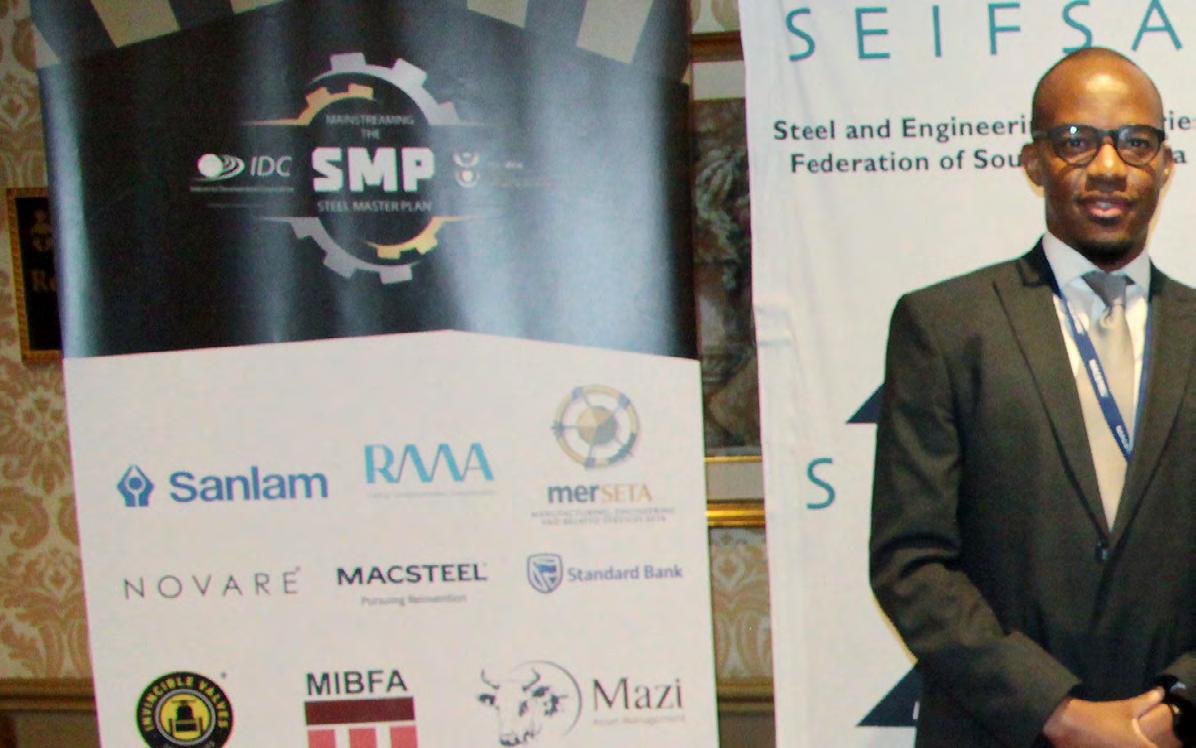
Our various Divisional Executives continued to be active on various industry institutions and national business and tri-partite platforms.
During the year under review SEIFSA hosted a successful Metal Industries Collective Bargaining Summit where over 150 delegates together with senior government officials, business owners, union leaders, academics and expert social commentators were in attendance. The Minister of Employment and Labour delivered the keynote address on day two of the Summit and reiterated the importance of a stable labour market and centralised collective bargaining as key contributors to SA economic and reconstruction efforts.
Work on various workstreams of the Steel Master Plan continued under the period under review and whilst the progress may well seem painfully slow, the involvement of key captains of industry in various engagements with Government Minister’s and Senior Officials from various Government Departments and SOEs signals businesses’ willingness and commitment to want to play its part in meeting the goals and objectives of the plan.
During the period under review an historic meeting was held between industry Chief Executive Officers, President Cyril Ramaphosa, key Ministers in the Economic Cluster and senior representatives from various SOEs. This was a watershed moment where a sitting President has meet with SEIFSA. Apart from this historic occasion and various pressing matters being raised by business as requiring urgent attention, this once again demonstrated
the willingness of business to collaborate with Government on leveraging government infrastructure spending on areas such as the transmission network, rolling stock maintenance, rail localisation, water and sanitation.
SEIFSA also successfully hosted the SEIFSA Awards for Excellence event and the ever-popular SEIFSA Golf Day, which once again was over-subscribed.
A separate, consolidated Advocacy and Lobbying Report is provided by our Chief Operations Officer, Tafadzwa Chibanguza, in this Annual Review highlighting other, just as important, areas where SEIFSA lobbied and advocated for and on behalf of the affiliated membership.
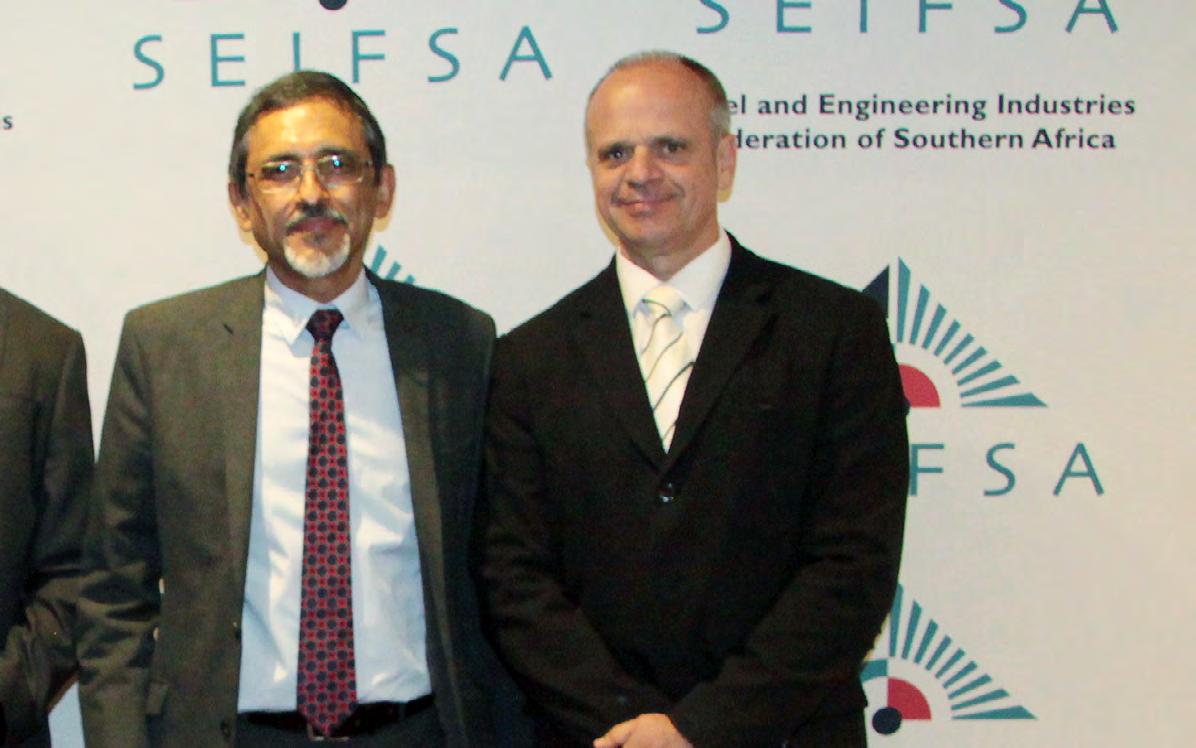
STABILITY AT INDUSTRY INSTITUTIONS
During the year under review, stability continued to exist at the two industry institutions, the Metal and Engineering Industries Bargaining Council (MEIBC) and the Metal Industries Bargaining Funds Administrators (MIBFA). MEIBC General Secretary Sicelo Nduna continues the slow progress, following the gazettal and extension of the two council levy agreements in October 2022, to returning the council to a semblance of its former self. Under the
watch of Jacques Calomiti, MIBFA Chief Executive Officer, MIBFA continues to provide an excellent service as custodian and administrator of the Engineering Industries Pension, Provident and Sick Pay Fund, which collectively have investments and asserts under management in excess of R140 billion.
A separate report on the MIBFA funds is provided by our Financial Executive, Mariaan de Jager, in this Annual Review.

THE YEAR AHEAD

While it is not possible to state, with a degree of certainty, how the next financial year is likely to be, it is probably safe to say that in order for the 2023/2024 financial year to be marginally better than the year under review the South African economy will need to perform far better and in a more dynamic and sustainable way. A lot hinges on the trajectory the economy will be taken in the months to come.
Removing barriers to competition, lifting regulatory restrictions, reducing red tape, increasing high-quality infrastructure investment, improving the quality of education and introducing a greener energy policy aimed at bolstering growth and limiting environmental damage through increased investment in renewable energy and other low-carbon technologies are but some of the key challenges that lie ahead. If we can get just some of these rights, only then is there reason to be cautiously optimistic that the economy may start to recover as we close out 2023 and move into 2024.
Key to the above will be whether we will indeed see meaningful progress on promised structural reforms. After almost a decade of low growth, declining investment and rising unemployment, the country needs a bold implementation of reforms to face mounting challenges and restore the economy’s growth potential.
Business has a crucial role to play in being visible in providing leadership. As the business sector, we must constructively engage with all social partners in a way that holds the Government to account on the one hand, but on the other drives a partnership with the state that provides capacity for mutual growth. If business and Government work together, we may stand a chance of turning the economy around, particularly in areas of ensuring an effective supply of water,
fixing logistics, including rail and port, investing in key infrastructure projects and combating crime. If we do not, we are in for very tough times.
My thanks
The team with which I have the pleasure of working at SEIFSA is richly deserving of my gratitude and appreciation. Collectively, we have continued to work hard to ensure the Federation’s success under challenging and difficult circumstances.
I thank all staff members, from the Executive Committee Members to the most junior employee. A special word of thanks goes out to Tafadzwa (Taffie) Chibanguza, Chief Operating Officer, who over a short period has proven to be great source of support to me and the membership.
As always, colleagues and I are immensely grateful to all SEIFSA Associations and their membership for their continued support and loyalty to the Federation. We appreciate each one of them.
Finally, my thanks and deep appreciation go to Elias Monage, SEIFSA President and Board Chairperson for his support, guidance and leadership and to the Board of Directors for its support and oversight of the Federation and the vote of confidence they have collectively invested in me to be the steward of the Federation.
Their collective skill, experience and wisdom and commitment to good corporate governance remain greatly appreciated.
Lucio Trentini Chief Executive Officer
ASection A Executive Report

CHIEF OPERATIONS OFFICER’S REPORT
An important mandate for the SEIFSA office is to lobby and advocate for a conducive and business friendly economic environment on behalf of its affiliated members. This is in line with the strategic decision taken by the organisation to be much more involved and vocal on issues of national importance that affect its members.

27
Tafadzwa Chibanguza Chief Operations Officer
This is in line with the strategic decision taken by the organisation to be much more involved and vocal on issues of national importance that affect its members. Another important aspect is to use the strong economic research
capabilities housed within SEIFSA to guide the lobby and advocacy positions and to turn those outcomes of the research to real and tangible benefits for the sector.
Meeting with President
Cyril Ramaphosa
Industry Engagement SABS/ DTIC Designation and local content
Competition Commission: Steel Sector Market Inquiry
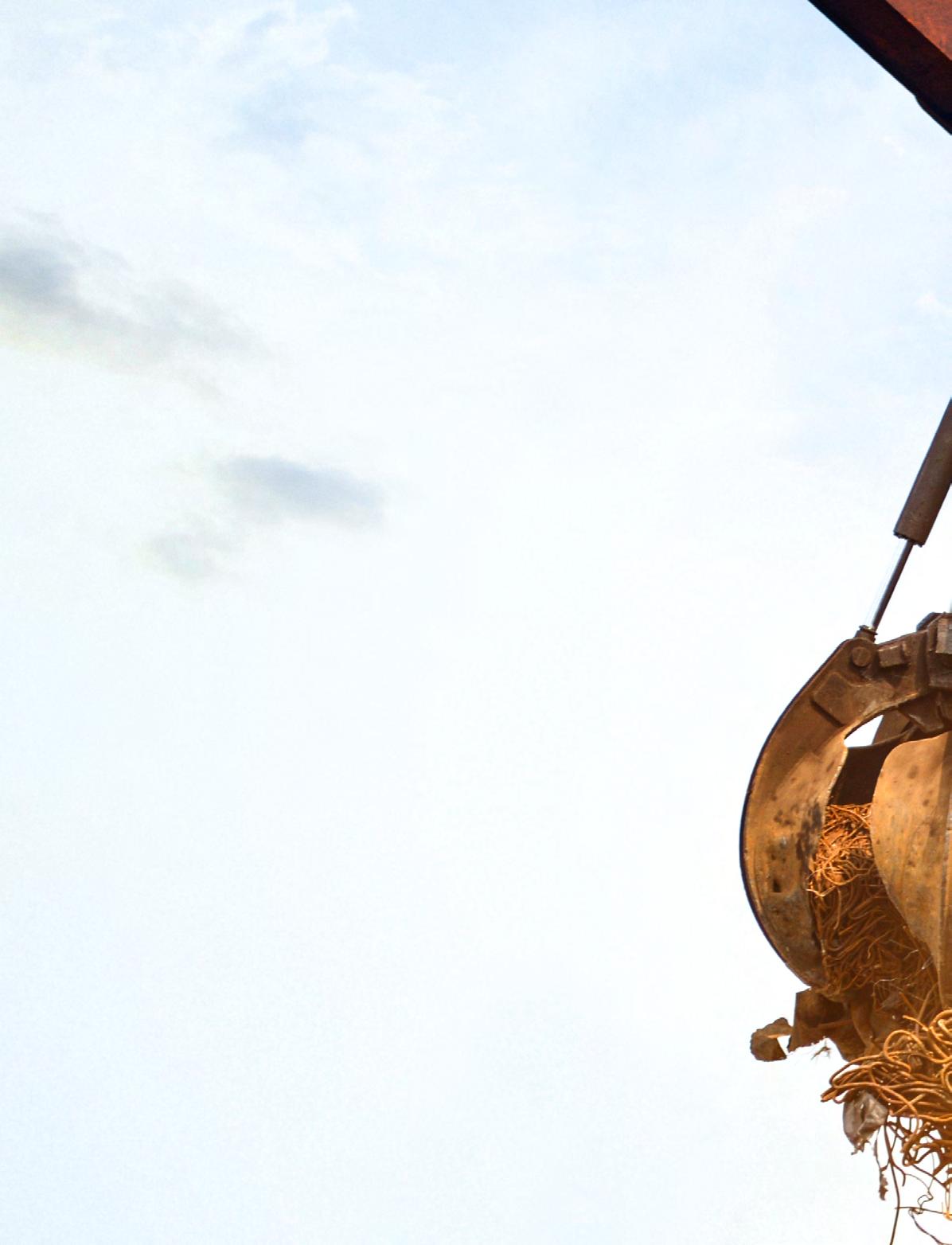
Load-Shedding Impact Assessment
Eskom-Industry Round Table
Steel Master Plan
National Energy Crisis Committee (NECOM)
BRICS
Public Platform Participation
This report highlights some key engagements and developments for the period July 2022 to June 2023 in which the SEIFSA office has been involved.
Scrap Metal State of the Metals and Engineering Sector
Public Procurement Bill Progress
SCRAP METAL
On November 30, 2022, the Department of Trade, Industry and Competition (DTIC) published the regulations on the measures to restrict and regulate the trade in ferrous and non-ferrous scrap metal. Prior to this, the SEIFSA office had made a considerable number of submissions to the DTIC on the draft regulations.
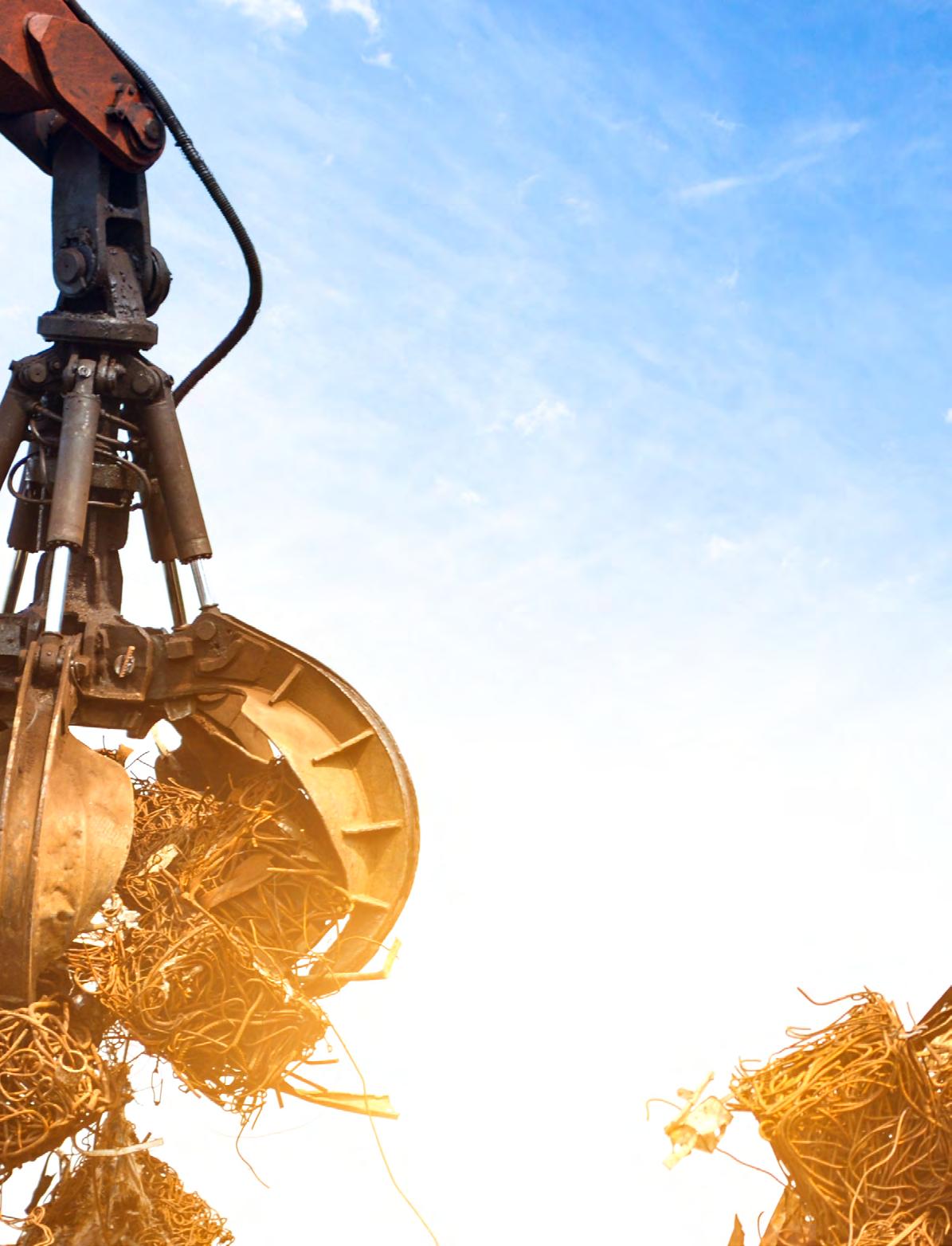
The SEIFSA office also worked with the CEO Forum in preparing a submission on the same matter. The DTIC reported that they received approximately 2 000 submissions on the regulations. An important change made from the draft regulations into the final regulations was the move away from adopting a blanket ban on all forms scrap metal exports, for the period of six months, to rather taking a nuanced approach to the metals, having consideration to the dynamics that apply to a specific metal. It is also identified in the regulations that copper scrap is the metal primarily driving metal theft, and a full export ban has been applied to that metal.
Aspects relating to the development of a Metal Trading Regime, export permits for semifinished products and the development of a Scrap Metal Act have all been maintained in the final regulations, many of which are in line with the SEIFSA submission. However, the SEIFSA submission stressed the fact that in the absence of strengthened law enforcement, all these policy interventions will not yield the desired effect.
The regulations propose the establishment of a Metal Trade Task Force, which will work with the South African Police Service’s (SAPS’s) Specialised Multi-disciplinary Economic Infrastructure Task Team, to play a coordinating role in planning and monitoring interagency efforts. While this is a welcomed policy proposal, the role of the office going forward will be to keep the pressure on the policymakers to fast track this task team and ensure that it works effectively.
Following the initial six-month ban, in April 2023, the DTIC published a draft set of regulations proposing an extension to the ban for a further period of nine months. The SEIFSA office submitted a comprehensive submission to these draft regulations, rebuffing the extension.
The submission highlighted the fact that the ban is a drastic measure, with very disruptive consequences while also having major industrial policy implications that disturb the very delicate metals value chain. Unfortunately, the department went ahead and extended the ban for a further six months. The SEIFSA office has written to the DTIC requesting an urgent meeting regarding the extension and the record of decision that informed the outcome. At the time of preparing this report this meeting date is still to be finalised.
MEEETING WITH PRESIDENT CYRIL RAMAPHOSA
In February 2023, the SEIFSA office, under the signature of the federation’s President, wrote to the office of President Cyril Ramaphosa requesting a bilateral engagement between the sector and state president. This meeting took place on April 18, 2023, between the SEIFSA board and President Ramaphosa who was accompanied by nine cabinet ministers mainly from the economic cluster, at the Union Buildings in Pretoria.
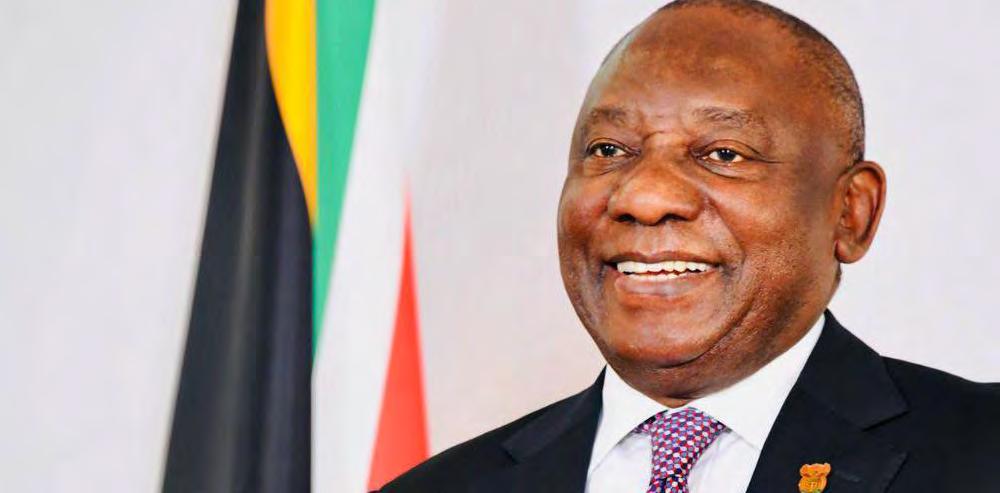
This is a landmark development given that it is the first time in the 80-year history of the federation’s existence to have a direct engagement with a sitting president. The purpose of the meeting was for the SEIFSA delegation to raise issues of critical importance to the sector, to present the pressing bottlenecks constraining the
growth of the sector and, most importantly, to stress the fact that SEIFSA and its members want to be part of the solution in the repair and recovery of the economy. To this end issues of the lack of demand from an infrastructure spend, uncertainty around the public procurement regulations and the fact that talk needs to be converted to speedy action were all raised. It was encouraging to note the appreciation that the President has for the role that the Metals & Engineering (M&E) Sector already plays in the economy and the potential it can unlock in the recovery and growth of the economy. It was agreed that workstreams, which include Ministers and representatives from the sector, would be set up to look at issues of raising demand through infrastructure spend as well as repairing the existing infrastructure – particularly in rail, water, the electricity transmission network expansion and skills development. The workstreams will be expected to report back to the President on a four monthly basis.
“It was agreed that workstreams, which include Ministers and representatives from the sector, would be set up to look at issues of raising demand through infrastructure spend as well as repairing the existing infrastructure – particularly in rail, water, the electricity transmission network expansion and skills development. The workstreams will be expected to report back to the President on a four monthly basis.”
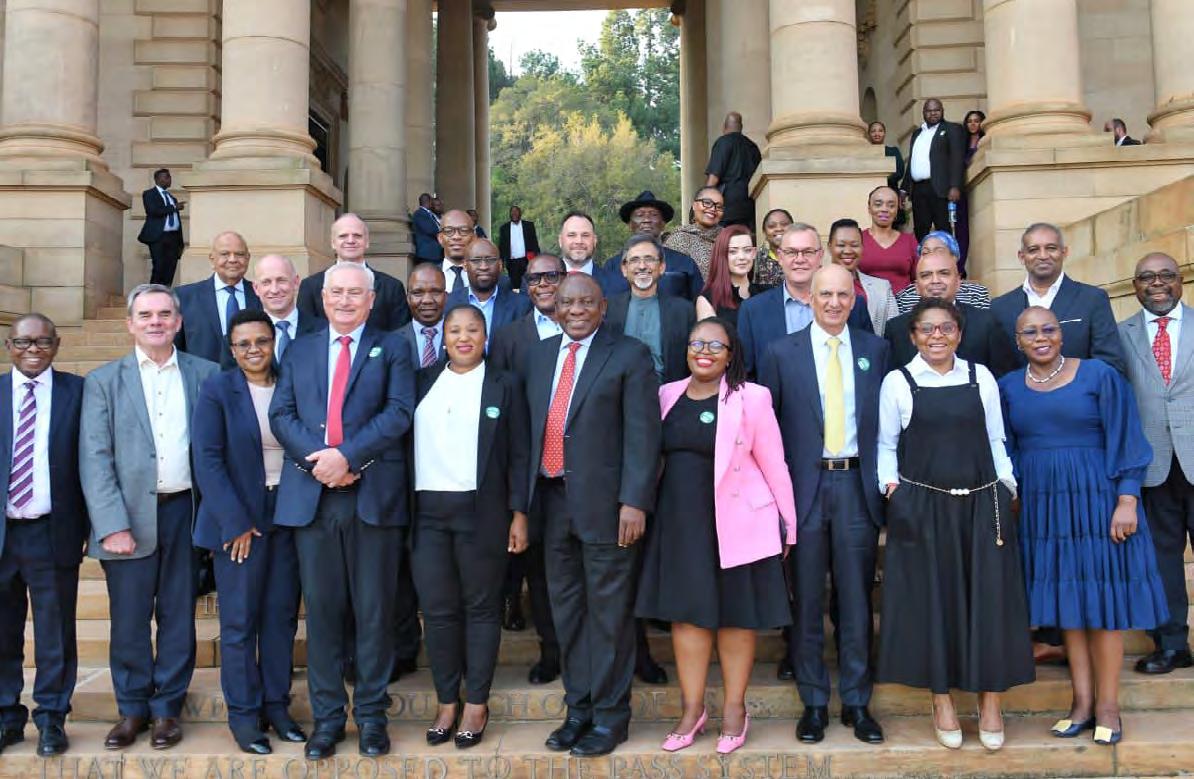
COMPETITION COMMISSION: STEEL SECTOR MARKET INQUIRY

In April 2023, the Competition Commission published, for public comment, a draft set of terms of reference (TOR) for a market inquiry into the steel sector closing on May 5, 2023, to which the SEIFSA office submitted a written comment.
In a nutshell, the market inquiry seeks to explore if there are market features that impede, distort or restrict competition in the steel sector. The inquiry primarily seeks to test aspects of market concentration as opposed to collusive behaviour. The SEIFSA submission takes the general view that we welcome any initiative that seeks to ensure a competitive sector (and economy), however, it would also be premature (at this stage) for SEIFSA to make detailed comments on some of the untested assertions made in the TORs, which may be proved to be true (or not) following a comprehensive analysis by the Commission. We believe it will be more
prudent to see what comes out of the inquiry following a comprehensive market analysis. The SEIFSA submission does, however, highlight that production in the sector has been on a structural decline since 2008/2009 (-1.2% CAGR), largely because of a lack of demand. Therefore, in such an environment of company closures and/or consolidation of operations, the question of concentration must be tested via the lens of demand and prevailing market size, and not just the absolute number of companies operating in a market. The SEIFSA submission can be made available on request.
32
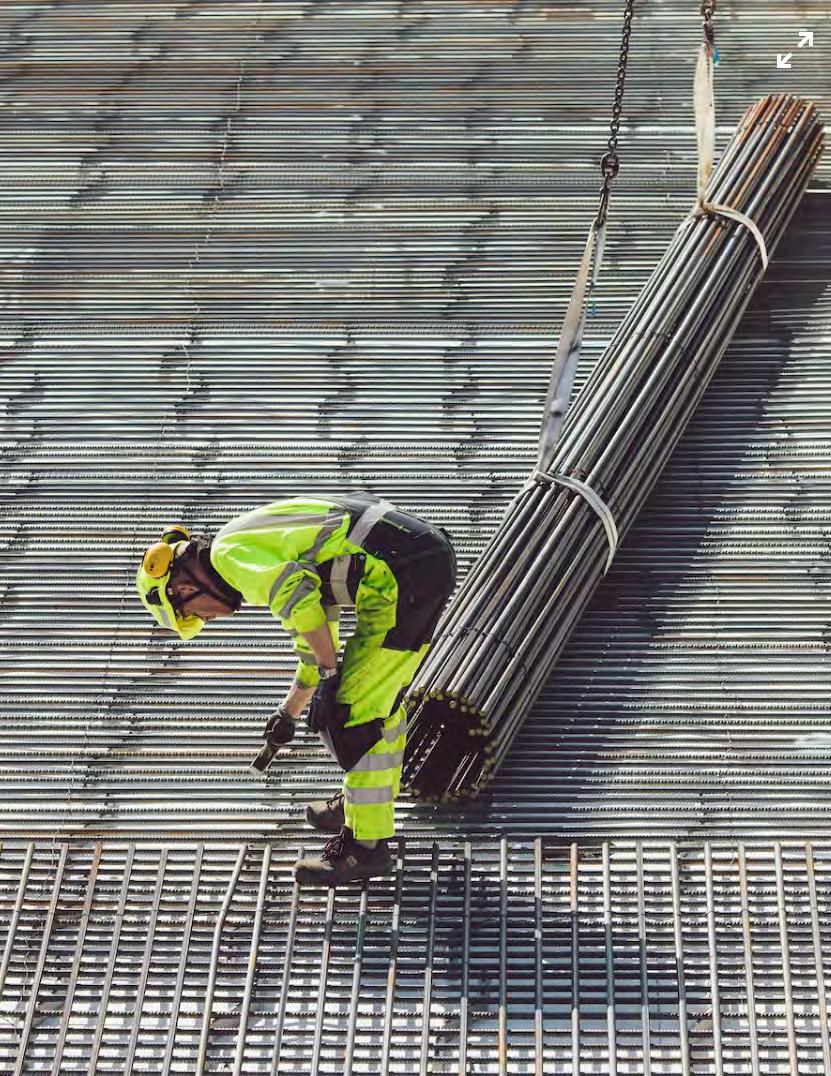
ESKOM-INDUSTRY ROUND TABLE
SEIFSA as part of a BUSA delegation has been actively participating in the Eskom-industry roundtable events, the last of which was held on April 19, 2023. The round table events are attended by the Eskom Board, Group CEO and Executives for Generation, Transmission and Distribution.
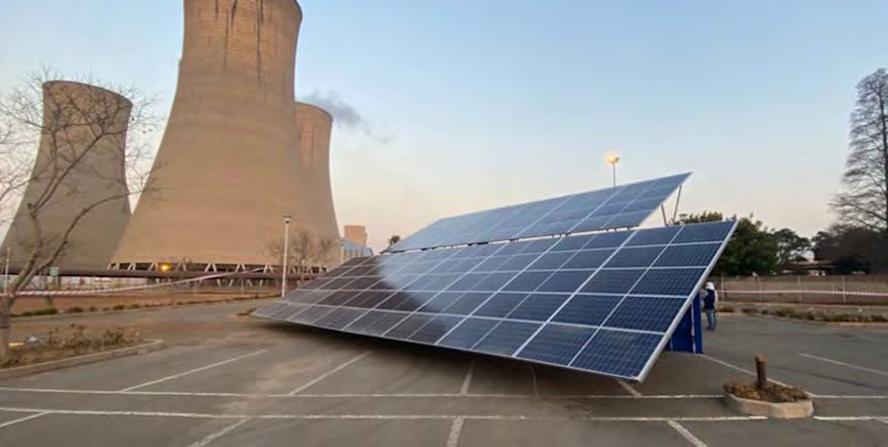
The BUSA delegation is constituted by technical and energy policy representatives. The purpose of the roundtable interventions is to get progress updates from Eskom on the system operational outlook, maintenance and progress on the financial aspects, including balance sheet reorganisation. Collaborative solutions to the electricity crisis are also exchanged at this roundtable. Two key aspects are critical for our representation on this platform as SEIFSA. Firstly, to get a sense of the progress on the Transmission Development Plan (TDP), which
is important for expanding grid capacity, but also important given our representation of many member companies that would feed products into the development of the transmission network.
Secondly, to assist in the development of demandside management protocols for small and mediumsized power users that consume below the 3MVA level (which is the minimum consumption required to participate in load curtailment programmes).
PUBLIC PROCUREMENT BILL
Public procurement accounts for 22.9% of M&E Sector sales and in some sub-sectors public procurement accounts for as much as 56% of total domestic sales.
For this reason, we have kept a keen eye on the progress of the changeover of public procurement regulations from the Public Funds Management Act (PFMA) to the Public Procurement Bill. While the legislative process of promulgating the Public Procurement Bill progresses through the traditional process, a set of interim regulations were published on January 16, 2023, which have created a lot of uncertainty in the market. These interim regulations devolve the responsibility to state organs to pursue their own procurement policies and they also remove the obligations related to preference to local manufacturing. We have kept up the pressure – in partnership with SABS, DTIC and the associations – regarding the need to fast
track the promulgation of the Public Procurement Bill because the interim regulations present an opportunity cost for local manufacturers, which will have long-lasting effects.
At the time of preparing this report, the Public Procurement Bill has been submitted to Parliament, and then it will need to go to the National Council of Provinces and then ultimately to the Presidency for promulgation. Given the importance of this bill, we anticipate that a number of interests will be preparing to lobby the outcomes of this bill, and the SEIFSA office will also participate in the consultations until promulgation.
35
The SEIFSA office as part of a BUSA delegation participated in the NEDLAC consultation on the Public Procurement Bill. The consultation took place over the period March 2022 to October 2022 in the form of weekly meetings.
of M&E Sector sales
PUBLIC PROCUREMENT 22.9%
“Given the importance of this bill, we anticipate that a number of interests will be preparing to lobby the outcomes of this bill, and the SEIFSA office will also participate in the consultations until promulgation.”
STEEL MASTER PLAN
As an ongoing programme, and one of SEIFSA’s strategic objectives, the SEIFSA representatives are actively involved in the different workstreams that are tasked with the implementation of the Steel Master Plan (SMP).
In a number of instances these representatives hold leadership roles allowing them to be part of steering the intended outcomes. The latest developments from the reference period of this report include SEIFSA’s Chief Executive Officer, Lucio Trentini, having been appointed to the Management Committee of the SMP. This structure is chaired by Deputy Minister of the DTIC Fikile Majola and is the leadership structure that interfaces between the SMP working groups and the Steel Oversight Council, which is chaired by Minister Ebrahim Patel. Zizile Lushaba, SEIFSA’s Human Capital and Skills Development Executive, has been appointed to chair the Transformation and Human Resources Pillar of the SMP. Tafadzwa Chibanguza, Chief Operations Officer, has been appointed to lead the Marketing workstream of the SMP’s Export workstream. The respective colleagues are also active participants in the other workstreams.
STATE OF THE METALS AND ENGINEERING SECTOR
In February 2023, the SEIFSA office published the annual State of the Metals and Engineering Sector report, which also gained noted public traction.
Given the global economic headwinds, compounded by domestic rigidities, our initial estimate was for production to contract by - 2.2% in our base case scenario (the best-case scenario being modelled at a -1.5% contraction) for 2023. However, on factoring in the results from the impact to production as communicated by companies in the load-shedding impact assessment, that contraction deteriorates to -5.3% for the year. This work is also very important in supporting the SEIFSA office’s lobby and advocacy efforts for the need for real and meaningful structural reform in resolving the challenges bedevilling the South African economy. We will continue to monitor these trends and communicate the outcomes to members.
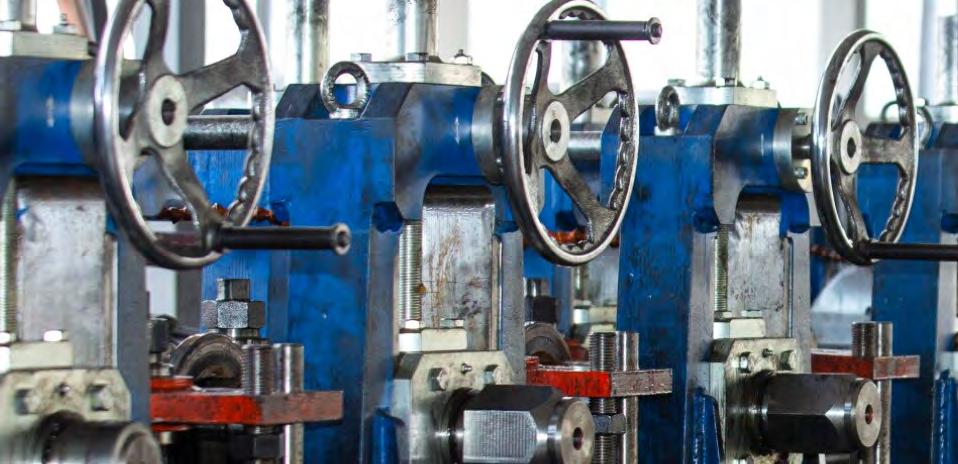
INDUSTRY ENGAGEMENT SABS/DTIC DESIGNATION AND LOCAL CONTENT
In March 2023, the SEIFSA office and representatives from the board and associations met with the SABS. This was to deal with the fact that it has been identified that one of the main impediments to the successful implementation of the designation and localisation policies is the inability of the SABS to perform its statutory function of verifying the local content in products.
Particularly concerning is the proliferation of imports in state infrastructure projects where products are designated for local procurement by state organs.
There is a growing trend of contracts being awarded to importers or contractors making local content declarations that are never later verified by SABS, which creates a loophole for contractors to circumvent the local content provisions of the designation policy. In all these cases, the SABS has been identified as the weak-link that perpetuates the trends.
The purpose of the engagement will be to present the challenges experienced by industry and importantly to collectively develop solutions and a practical working arrangement between the industry and SABS.
LOAD-SHEDDING IMPACT ASSESSMENT
In March 2023, the SEIFSA office compiled a load-shedding impact assessment measuring the impact of the electricity crisis on the M&E Sector.
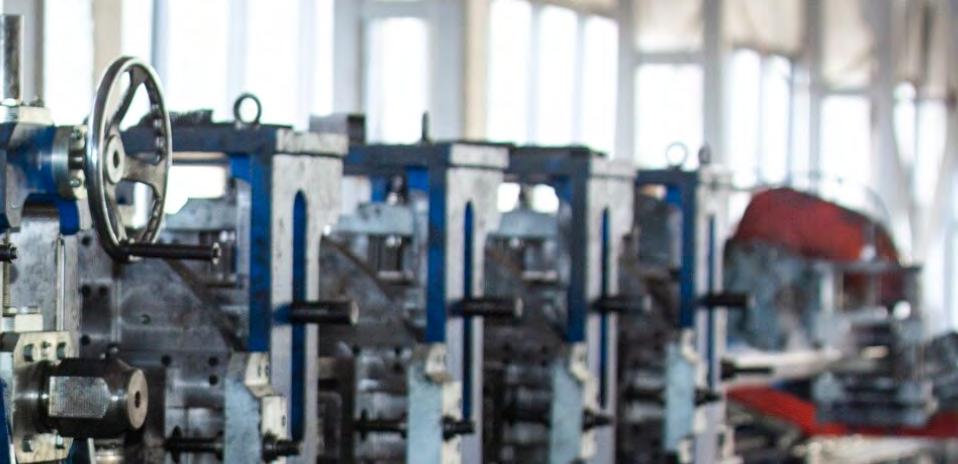
A total of 206 companies employing 37 940 (or 10% of the total sectors employment) participated in the compilation of the impact assessment.
The report is a very useful tool in supporting the lobby and advocacy work of the SEIFSA office in the energy-related work, because it gives some tangible and equally alarming facts and figures regarding the impact of the load-shedding crisis on the sector. The report also caught the attention of the Presidency and various ministries, and, importantly, supports SEIFSA’s advocacy efforts for the need for structural reforms in the energy sector.
NATIONAL ENERGY CRISIS COMMITTEE (NECOM)
The NECOM structure was set up by President Ramaphosa as a working committee to implement the structural reforms to resolve the energy crisis facing the country. In June 2023, the structure was overhauled, from being strictly an inter-governmental structure to allowing wider (private sector) direct participation. Historically, the NECOM team (inter-government) would do the work and then meet with business to report on progress, take questions and inputs. This led to criticism by business that it is being treated as a by-stander and not a partner in participating in this structure. The Presidency requested that the business sector should better organise itself into formal structures that will actively participate in the respective workstreams under NECOM, a process that was facilitated by the Energy Council of South Africa. The SEIFSA office has been nominated to participate in the Policy and Regulatory Standing Committee.
BRICS
In May 2023, the SEIFSA office re-engaged its secretariate support for the Manufacturing Work Group of BRICS. This role allows SEIFSA to be at the centre of coordinating the efforts of the workgroup, while also being exposed to opportunities that may be of value to SEIFSA members.

PUBLIC PLATFORM PARTICIPATION
With SEIFSA’s active participation in matters of national discourse, the office has noted a strong increase in the public profile and increased
calls for the office to participate on external public platforms, over and above the media platforms.
This is an important avenue to communicate SEIFSA positions and to bring the M&E Sector’s voice to the public light. These events include:
November 2022 - Electra Mining
• March 2023 - Trade and Industrial Policy Strategies (TIPS) Energy Round Table
• April 2023 - Engineering News Manufacturing Sector Round Table
• May 2023 - ProductivitySA Automotive and Steel Sector Report launch
June 2023 - NAAMSA CEO Round Table
June 2023 - Black Business Council Annual Summit
We look forward to the next year of raising the SEIFSA profile and promoting the interests of its members and the Metals & Engineering Sector on matters of national interest.
Tafadzwa Chibanguza Chief Operations Officer
39
ASection A Executive Report

FINANCIAL REPORT
The Federation commenced the financial year with a firm strategy set by the Board aimed at building a stronger Federation better serving the needs of its Associations and membership. With a strong and resourceful team in place, the Federation built on its relationships with Government, Labour, Employers and other Industry Bodies which has led to an increase in awareness and support as measured by the Advertising Value Equivalent (AVE). The operations of the Federation have been optimised over the past few years and during the year we continued to manage costs efficiently without compromising service delivery.
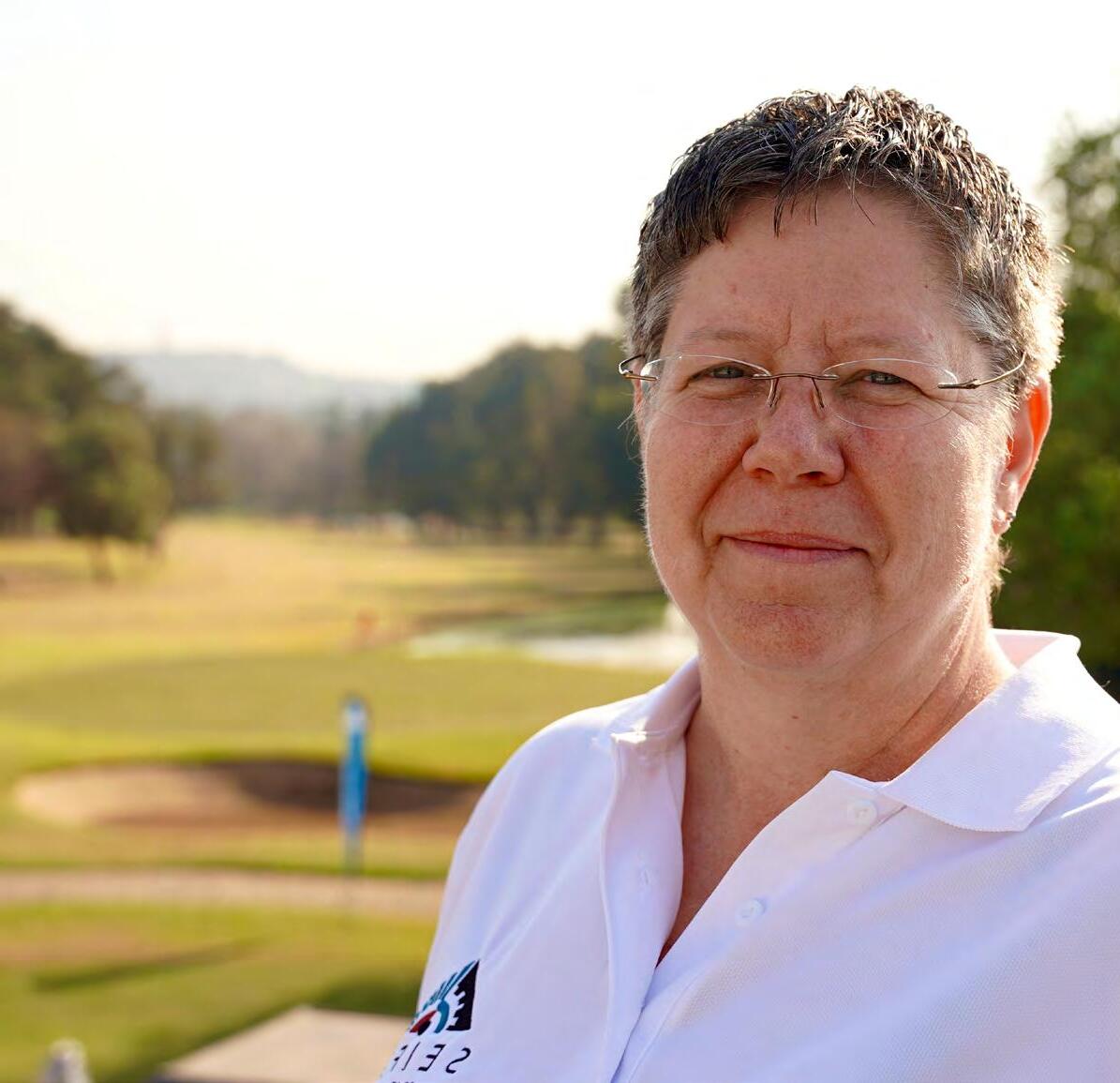
41
Mariaan de Jager
Finance Executive
Our team remained focussed on delivering exceptional value to its customers. We have managed to achieve and exceed our financial targets across various dimensions. We have capitalised on opportunities that arose during the year, which is attributable to more market visibility and recognition of the sterling offerings that SEIFSA has. This is another affirmation of achieving our strategy set by our supportive and inspiring Board.


Our economy has not made any significant improvements from the prior year and remains constrained with low growth rates. This challenge bodes poorly for any material increase in employment or conversely the high levels of unemployment will continue to plague the country. With the State having to fork out huge sums of money to support its millions of citizens, the fiscus has severely cut down on infrastructure spend. Coupled with corruption and a volatile political environment, the anticipated creation of demand for product from our sector remains a long way away. What remains are pockets of prosperity amongst our membership. The global arena has also presented challenges, geo-political challenges, war, lack of supply of raw materials, oil and gas shortages are amongst some challenges that impacted industry locally. Our load shedding challenges continue to impact production, not only being disruptive to manufacturing but has increased the cost of production vis a vie, excessive money spent on diesel and the astronomical capital cost of having alternate energy solutions installed. The impact of all these challenges have resulted in the spending power of members have been hugely constrained. Notwithstanding these challenges, the Federation has produced a set of sterling results.
primary source of revenue was generated from fees levied to Associations, with the other revenue streams being generated from the sale of products, services and publications offered by the following Divisions:
Industrial Relations;
Human Capital and Skills Development; and Economic and Commercial.
The Safety, Health, Environment and Quality service offerings have been outsourced. SEIFSA has continued to offer accounting, administration and management services to its affiliated Associations. The SEIFSA Training Centre (STC) continues to focus on developing high calibre artisans to meet the needs of employers in addressing the skills shortage in artisan development that faces the country. The performance of the STC exceeded its targets and continues to garner interest from prospective companies. The STC is able to train students on the legacy and new occupational curriculums. The relaunched STC remains an important catalyst in contributing to the upskilling of our population, contributing to the improvement of infrastructure (power generation and transmission, rail, water and sanitation) and creating opportunities for young entrepreneurs.
During the year the staff of the Federation remained robust with very low levels of staff turnover, whenever vacancies arose, the Federation has been agile in filling these vacancies, without much disruption and ensuring that the Federation meets its objectives and budget.
OVERVIEW OF FINANCIAL RESULTS

Although the growth of the economy remains constrained, our membership remains robust with the Federation exceeding the collection of membership fees. For the year under review the Federation continued to operate with a primary focus on collective bargaining, lobbying and advocacy, whilst simultaneously having a secondary focus on generating revenue from consultancy, training and the sale of publications such as the SEIFSA Price and Index Pages, Industrial Relations Advisors and The Main Agreement Handbook. The
We are pleased to report that the Federation recorded a surplus against budget for the year under review. With two successive years posting surpluses exceeding its budgets the Federation is on a growth path. This is testament to the Federation’s ability to be agile, to cope in a fast-changing environment and remaining resilient in the face of challenges.
Income generated from membership fees has increased by 8.7% from FY2021/22. This increase was mainly due to the collection of membership fees from prior years.
42
The rationalisation of the Federation and renewed strategy has enabled it to manoeuvre through tumultuous waters.
The SEIFSA Training Centre (STC) has been under new management from 1 January 2021. Thuthukisa Advisory & Consulting (TAC) has taken over the management of the STC for a period of five years. It is pleasing to note that the STC under TAC has recorded a profit, meeting its budget expectations.
The revenue generated from the sale of products and services decreased by 6.0% when compared to FY2022/23. This deterioration is a function of the tough operating environment and the run off of the Centres of Specialisation tender. There were pockets of excellence amongst some service offerings.
Total expenses for the current year decreased by 0.3% when compared to FY2022/23. Cost containment and the optimisation of costs continued to be implemented throughout the year and will remain the mantra into the next financial year.
The year closed with a surplus which is a significant improvement from the previous financial year.
INTERNAL CONTROL
SEIFSA’s system of internal control is designed to provide reasonable assurance that, inter alia, assets are safeguarded and that liabilities and working capital are managed efficiently.
RISK STRATEGY
SEIFSA has a risk management strategy in place and actively monitors and takes appropriate action against the risks identified and captured in the Risk Register.
FRAUD AND CORRUPTION
SEIFSA has committed itself to actively combatting fraud and all other acts of dishonesty on a zerotolerance basis.
DISCONTINUED ACTIVITIES/ ACTIVITIES TO BE DISCONTINUED
SEIFSA has no discontinued activities or activities to be discontinued in the next 12 months.
NEW OR PROPOSED ACTIVITIES
SEIFSA has no new or proposed activities for the next 12 months.
GIFTS AND DONATIONS RECEIVED IN KIND FROM NON-RELATED PARTIES
No gifts and donations were received in kind from non-related parties. Employees are limited to receiving gifts totalling R500.00 per annum and are obliged to complete the Gift Register which is tabled at the Executive Committee meeting every quarter.
EVENTS AFTER REPORTING DATE
No events took place after the reporting date that would materially impact on the financial position and/or performance of SEIFSA.
FUTURE PLANS
SEIFSA will continue to focus on its strategy and continue to focus on its primary mandate which is: collective bargaining, lobbying and advocacy. As a secondary focus the Federation will simultaneously seek to generate revenue from the rendering of services that are paramount to its members’ and deliver products that add value. Continuous monitoring of the environment affecting the Federation will be maintained and the necessary corrective action will be implemented timeously to ensure that the Federation remains financially viable, relevant and on track to deliver on its mandate.
The year ahead remains a challenging one because of the operating environment and the global challenges. Notwithstanding this, the Federation is well positioned to have another successful year.
Mariaan De Jager Finance Executive
43
BSection B Corporate Report

ABOUT SEIFSA
The Steel and Engineering Industries Federation of Southern Africa (SEIFSA) is a national employer federation representing the Metals & Engineering (M&E) Sector.
SEIFSA has, for the past 80 years, supported its members by lobbying for policies that have improved the business environment in which its members operate.

45
Theresa Crowley Association Manager
SEIFSA’s management team represents employers on a number of organisations that are critical to the success of the industry as a whole, including Business Unity South Africa (BUSA), the National Economic Development and Labour Council (Nedlac) and the National Skills Authority (NSA). Over the years, the SEIFSA management team has positively influenced legislation and policy affecting labour relations, skills development and economic and trade matters.
SEIFSA has a dual purpose: to operate at national level as the recognised voice of the M&E Sector and at individual member company level by providing a comprehensive range of services and products to its members.
At industry level, SEIFSA negotiates collective agreements covering wages, conditions of employment and social security benefit arrangements with the trade unions. The Federation also represents employers on the boards of the Engineering Industries Pension Fund, the Metal Industries Provident Fund, the Metal and Engineering Industries Permanent Disability Scheme, the Metal and Engineering Industries Bargaining Council (MEIBC), the MEIBC Sick Pay Fund and the Manufacturing, Engineering and Related Services SETA.

Communication is an important aspect of the Federation’s relationship with its members. There are four main channels of communication:
• SEIFSA’s website (www.seifsa.co.za)
• Regular electronic mails
• Regular Association meetings
• Social Media
SEIFSA ASSOCIATIONS
SEIFSA is the umbrella body for the following 18 Independent employer associations representing all the diverse sectors which constitute the metal and engineering industry
GAUTENG
• Association of Electric Cable Manufacturers of South Africa (AECMSA)
• Constructional Engineering Association (South Africa) (CEA)
• Temporary Employment Services Division (CEA) (TESD)
• Electrical Engineering and Allied Industries’ Association (EEAIA)
• Electrical Manufacturers’ Association of SA (EMASA)
• Gate and Fence Association (GAFA)
• Hand Tool Manufacturers’ Association (HATMA)
• Iron and Steel Producers’ Association of South Africa (ISPA)
• Light Engineering Industries’ Association of SA (LEIA)
• Non-Ferrous Metal Industries’ Association of South Africa (NFMIA)
• Refrigeration and Air-conditioning Manufacturers’ and Suppliers’ Association (RAMSA)
• SA Electroplating Industries’ Association (SAEPIA)
• SA Pump Manufacturers’ Association (SAPMA)
• SA Valve and Actuators Manufacturers’ Association (SAVAMA)
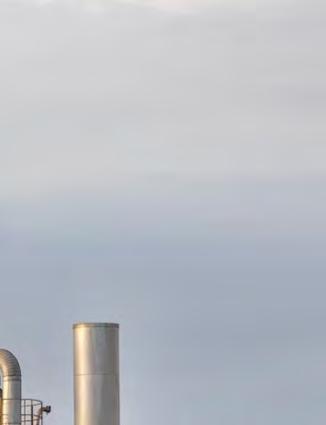
• South African Refrigeration and Air-Conditioning Contractors’ Association (SARACCA)
KZN
• Kwa-Zulu Natal Engineering Industries’ Association (KZNEIA)
WESTERN CAPE
• Cape Engineers and Founders Association (CEFA)
• Eastern Cape Engineering and Allied Industries Association (ECEAIA)
SEIFSA is a non-profit body. Its main source of income derives from annual per capita levies on member companies. The balance derives from income from services rendered and products sold to companies in the industry. SEIFSA’s range of services and products includes consultancy (covering labour legislation, employment conditions, human capital and skill development, safety, health, environment and quality, broad-based black economic empowerment and contract price adjustment), publications, training courses, seminars and conferences.
SEIFSA has, since its formation in 1943, helped to promote a business environment in which its members can successfully run their operations. The past year
has been no exception and SEIFSA has demonstrated that it plays a vital role in promoting and protecting the interests of employers in the industry.
For the 2022/2023 financial year, the Associations had a combined membership of 1,077 companies employing a total of 138,751 employees. Three of the Associations federated to SEIFSA employ 65% of the total membership, namely the Constructional Engineering Association of South Africa (CEA) and the Light Engineering Association of South Africa (LEIA) followed by the Electrical Engineering and Allied Industries Association (EEAIA). Of these member companies, 56% employ fewer than 50 employees and 72% are located in Gauteng.

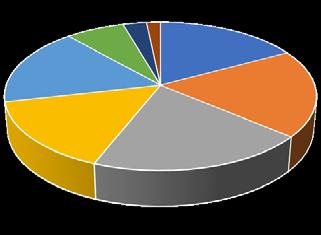
The regional location of the SEIFSA
membership
of the associations
SEIFSA
federated to SEIFSA is illustrated below: SEIFSA Associations’ membership by regional location: June 2023
MEETINGS
The Federation experienced another very active year in terms of Association meetings and meetings of the various interest groups within SEIFSA and joint meetings with other organisations.
The SEIFSA Council is the mandating body of the Federation on all matters requiring a mandate from member Associations. It comprises elected
representatives from the various Associations and co-opted senior industrialists. During the year under review, the SEIFSA Council met on five occasions, including the Annual General Meeting (AGM). All the meetings were held virtually, except for the AGM, which was held in-person.
48
The composition of the SEIFSA membership of the Associations federated to SEIFSA according to number of employees employed is illustrated on the following
graphs:
Associations’ membership:
2023 17% 19% 20% 15% 17% 7% 3% 2% 0-10 11-24 25-49 50-99 100-249 250-499 500-999 1000->
June
13% 2% 12% 72% 1% Cape Eastern Cape KwaZulu Natal Gauteng OFS and Northern Cape
Theresa Crowley Associations Manager
ADMINISTRATION SERVICES

ASSOCIATIONS
The past financial year was extremely challenging for South Africa, which has had a major impact on the Metals & Engineering (M&E) Sector, a major contributor to the economy. We commend the affiliated member companies for continuing to survive and in some cases reinventing themselves.
49
The three-year agreement, which expires on 30 June 2024, translated into some stability for the industry after the dreadful three-week long strike in October 2021, which took a major toll on the industry. Members have battled to recover, which is reflected in the membership figures.
Notwithstanding the above, the associations continue to function as going concerns – they are only as strong as their membership and the fact that they continue to function and remain relevant demonstrates that there is potential for growth.
Many of the associations, supported by SEIFSA, offered struggling companies’ temporary financial relief and will continue to do so to ensure the sustainability of the industry and thereby the associations.

We ended the year under review with the tragic passing away of the newly appointed Executive Director for the South African Refrigeration and AirConditioning Contractors’ Association (SARACCA), Mr John Parry. John was the managing member of 52 Eng and also served a three-year term as the President of SARACCA (2017-2020). We pay tribute to John for his contribution to the refrigeration and air-conditioning contracting industry as well as to SEIFSA.
Prior to the passing away of John Parry, the outgoing Executive Director of the SARACCA, Barney Richardson announced his retirement after serving 21 years as the Executive Director of the SARACCA. We applaud Barney for his dedication and passion for the industry as well as the support for SEIFSA during his tenure.
ADMINISTRATION AND FINANCIAL SERVICES
Secretarial and Accounting Services
In addition to the industry services offered by SEIFSA, the Federation also provides a secretarial and accounting service to some of the constituent employer associations.
These include the following specific services:
• Accounting
Administrative and secretarial
• Communication and liaison
Compliance
• Marketing (including membership retention and recruitment)
In keeping with SEIFSA’s loyalty programme, the Federation has changed the tiers of the structure of the membership to be more relevant in recognition of membership:

• Diamond member companies
31 years
• Platinum member companies
22-30 years
• Gold member companies
15-21 years
Silver member companies
8-14 years
Bronze companies
1-7 years
For the 2022/2023 financial year, the number of companies in the above loyalty structure were as follows:
Diamond 186 member companies
Platinum 156 member companies
Gold 185 member companies
Silver 142 member companies
Bronze 522 member companies
Theresa Crowley Associations Manager
BSection B Corporate Report

SEIFSA REPRESENTATION ON OTHER BODIES
SEIFSA IS REPRESENTED ON THE FOLLOWING BODIES:
• Business Unity South Africa (BUSA) Energy Task Team of BUSA
• SEIFSA Training Centre Governing Body

Manufacturing, Engineering and Related Services Seta (merSETA)
• Metal and Engineering Industries Bargaining Council (MEIBC)
• Metal Industries Benefit Funds Administrators (MIBFA)
• Rand Mutual Assurance (RMA)
• Unemployment Insurance Fund ( ) Compensation Fund
• National Economic, Development and Labour Council (Nedlac)
• BRICS Manufacturing Working Group
South African Reserve Bank
Economists Round Table
Statistics South Africa
Contract Price Adjustment
Provisions Committee
Steel Mater Plan (SMP)
Workstreams
53
SEIFSA, through its membership of these bodies, is able to influence business and policy makers at the highest level and to represent the interests of members. This is aligned to the Federation’s vision: to represent and promote the interests of business in Southern Africa, in particular the Metals and Engineering Industry, through lobbying and capacity building, provision of related services and building of good relations with key stakeholders.
BUSINESS UNITY SOUTH AFRICA (BUSA)
BUSA participates in a wide range of forums and structures that shape the nature of our regulatory environment. In particular, BUSA plays an active role in Nedlac.
Internationally, it is a member of the International Organisation of Employers, the Pan-African Employers’ Confederation, and the Southern African Development Community Employers’ Group. BUSA is also the official representative of business at the International Labour Organisation, African Union Social Affairs Commission and the World Trade Organisation. Various SEIFSA Executives participate in a number of BUSA’s Sub-Committees, including the following:
STANDING COMMITTEE ON ECONOMIC POLICY
SEIFSA is represented on the BUSA Standing Committee on Economic Policy by Tafadzwa Chibanguza, SEIFSA’s Chief Operating Officer. The committee serves mainly as the employer caucus for Nedlac’s Trade and Industry Chamber, Public Finance and Monetary Policy Chamber and the Development Chamber.
SUB-COMMITTEE ON EDUCATION AND TRAINING
SEIFSA is represented on this committee by Zizile Lushaba, SEIFSA’s Human Capital and Skills Development Executive. The committee acts as a joint employer body to examine and make recommendations on policy matters in the field of skills development.
STANDING COMMITTEE ON SOCIAL AND TRANSFORMATION POLICY
Lucio Trentini, Vuyiswa Miya-Mokwana and Zizile Lushaba serve as members of this committee.
merSETA GOVERNING BOARD
SEIFSA is represented on the Governing Board by Sumaya Hoosen.
METAL CHAMBER
SEIFSA is represented in the Metal Chamber by Zizile Lushaba and Sumaya Hoosen.
MEIBC
The MEIBC is the forum created by employers and industry trade unions to facilitate the industry wage and employment condition negotiations and to administer and enforce the various collective agreements arising from this process.
SEIFSA serves the membership’s interests on the following structures and committees:
THE MANAGEMENT COMMITTEE
This committee controls the activities of the bargaining council and determines its strategic direction and focus.
THE NATIONAL FINANCE AND ADMINISTRATION COMMITTEE
This committee controls the council’s administrative and financial functions and responsibilities.
THE NATIONAL STANDING COMMITTEE
This committee is responsible for negotiating various issues arising from the industry’s Settlement Agreement and other technical issues that arise relating to the industry’s Main Agreement.
THE REGIONAL COUNCILS
SEIFSA staff and appointed employer representatives serve on the council’s regional structures. These regional councils are responsible for the administration of the MEIBC’s functions in the various regions falling under the scope of jurisdiction of the bargaining council.
MIBFA
SEIFSA is represented on MIBFA’s Board of Directors and on the Boards of Management of the four industry benefit funds, namely:
• Engineering Industries Pension Fund
• Metal Industries Provident Fund
54
• Metal and Engineering Industries
Permanent Disability Scheme
Metal and Engineering Industries
Bargaining Council Sick Pay Fund
SEIFSA represents 50% of the membership of each of these bodies, with the industry’s trade unions making up the balance.
NEDLAC
Nedlac provides a forum for Government, together with organised business, labour and community groups, to meet at national level to engage on issues of social and economic policy. Nedlac’s aim is to make economic decision-making more inclusive and promote the goals of economic growth and social equity. Organised business is represented by BUSA, of which SEIFSA is a member.
SEIFSA serves the business and membership’s interests on the following Nedlac committees:
NATIONAL DEMARCATION COMMITTEE
Lucio Trentini is a business representative on Nedlac’s Demarcation Standing Committee. This committee provides a forum where all formal applications for demarcation between bargaining councils and various demarcation issues and disputes between sectors and bargaining councils are considered and determined.
LABOUR MARKET CHAMBER
Lucio Trentini is a business representative on Nedlac’s Labour Market Chamber. The chamber provides a forum where the social partners are able to engage in meaningful debate around proposed amendments to labour legislation and planned changes to the country’s labour market policy.
TRADE AND INDUSTRY CHAMBER
Tafadzwa Chibanguza is a business representative on the Trade and Industry Chamber of Nedlac. The chamber debated various industrial policy options and alternatives during the year under review.
UNEMPLOYMENT INSURANCE FUND
Vuyiswa Miya-Mokwana serves on the Unemployment Insurance Fund (UIF).
COMPENSATION FUND
Vuyiswa Miya-Mokwana serves on the Compensation Fund.
RAND MUTUAL ASSURANCE
Rajendra Rajcoomar serves as one of the Directors on the Board of RMA.
BRICS BUSINESS COUNCIL MANUFACTURING WORKING GROUP
Tafadzwa Chibanguza serves as a member of the Manufacturing Working Group of the South African Chapter of the BRICS Business Council for the period under review.
SOUTH AFRICAN RESERVE BANK ECONOMISTS ROUND TABLE
Tafadzwa Chibanguza represents SEIFSA on this committee. The committee is a platform for information sharing and exchange between all sectors of the economy and the South African Reserve Bank (SARB) to assist in the SARB’s monetary policy formulation
STATISTICS SOUTH AFRICA CONTRACT PRICE ADJUSTMENT PROVISIONS COMMITTEE
SEIFSA, through its Price and Index Publication (PIPS) is a dominant authority in matters of contract price adjustment. This committee is tasked with setting the contract price best practices and non-binding regulations. Tafadzwa Chibanguza represents SEIFSA on this committee.
STEEL MASTER PLAN WORKSTREAMS
The work of the SMP is managed through dedicated workstreams. By the end of the reporting period, SEIFSA Executives are represented on the following workstreams
• Management Committee: Lucio Trentini
• Transformation: Lucio Trentini, Tafadzwa Chibanguza and Zizile Lushaba
• Human Resource Development: Zizile Lushaba
• Demand Side Measures: Lucio Trentini and Tafadzwa Chibanguza
Lucio Trentini Chief Executive Officer
55
BSection B Corporate Report

METAL INDUSTRIES BENEFITS FUND ADMINISTRATORS
Retirement Funds in South Africa are governed by the Pension Funds Act No. 24 of 1956 (as amended) that came into operation on January 1, 1958. Since then, all retirement funds (pension, provident and retirement annuity funds) must be registered in terms of this Act.

The main aims of the Pension Funds Act are to:
Register and regulate all entities operating as Retirement Funds; Protect the rights of members;
• Maintain minimum solvency standards to ensure that employers do not renege on their commitments to employees and leave them destitute in their old age; Ensure that the funds, as separate legal entities, have balanced ownership and accountability of the participating parties; and
• Dissolve funds that are financially unsound or wilfully violate the Act.
57
Mariaan de Jager Finance Executive
In terms of the Pension Funds Act, members have the right to elect 50% of the Board Members. A Trustee acts in a fiduciary capacity and should be familiar with and understand the laws governing retirement funds.
The Board of Trustees has appointed as its agent the Metal Industries Benefit Fund Administrators (MIBFA) to administer the funds of Employers and Employees in the Metals & Engineering (M&E) Sector. The Board is nevertheless accountable and ultimately responsible to the registrar and the Financial Sector Conduct Authority (FSCA). MIBFA provides administration services for the following funds:
• Engineering Industries Pension Fund (EIPF)
• Metal Industries Provident Fund (MIPF)
• Metal and Engineering Industries Permanent Disability Scheme
Metal and Engineering Industries Bargaining Sick Pay Fund
A BRIEF HISTORY OF THE FUNDS THAT ARE ADMINISTERED BY MIBFA
Engineering Industries Pension Fund
The Engineering Industries Pension Fund, being the continuation of the Metal Industries Group Life and Provident Fund with which the Metal Industries Group Pension Fund was merged with effect from January 1, 1995, was first established in 1957.
Until March 31, 2012, the Engineering Industries Pension Fund was a defined benefit fund. This means that the benefits that were payable in terms of the rules were guaranteed and fixed in nature. The fund bore the risk and benefits payable on retirement had to be paid as a monthly income and were payable to the member for the rest of his or her life.
The Board of Trustees agreed to convert the active member section of the fund to a defined contribution fund from April 1, 2012. This was done to guarantee the long-term financial sustainability of the fund.
In a defined contribution fund, member benefits are based on the members’ own contributions to the fund, plus the employer’s contributions, plus interest earned from investing these contributions.
The Metal Industries Provident Fund
The Metal Industries Provident Fund, a defined contribution fund, was established on May 1, 1991. In this fund, only the contributions are defined and benefits that are payable in terms of the rules are payable as a lump sum. There is no monthly income on retirement. The member, therefore, carries the risk and is responsible for ensuring that s/he invests the lump sum wisely.
On starting employment, workers can thus choose to belong to either the Engineering Industries Pension Fund or the Metal Industries Provident Fund.
The Metal and Engineering Industries Permanent Disability Scheme
The Permanent Disability Scheme was established in 1994 in order to provide a monthly income to members who become permanently disabled and unfit to carry out any occupation in the metal industries.
On joining either the Engineering Industries Pension Fund or the Metal Industries Provident Fund, members automatically assume membership of the Permanent Disability Scheme.
Metal and Engineering Industries Bargaining Sick Pay Fund
The Sick Pay Fund, a benefit fund governed by the Friendly Societies Act, was established in 1978. These benefits are temporary in nature and are geared to assist employees in times when they have exhausted their sick leave and have no means of income while they are absent from work due to illness or confinement. The benefit also includes payment to employees who are on maternity leave for a period up to six months.
58
REPRESENTATION ON THE BOARD OF TRUSTEES
The associations affiliated to SEIFSA have elected representatives from industry, together with employees of SEIFSA, to serve as trustees on the Boards of Trustees of the Pension and Provident Funds. The Board of Trustees comprises an equal split of representation from both employers and labour, who meet at least four times a year. Based on the level of knowledge and expertise that the trustees have, they also serve on various sub-committees of the Board of Trustees, namely:
• Governance Committee
• Investment Committee
Death Claims and Communications Committee
• Disability Committee
• Actuarial and Benefits Committee (sub-committee of the Investment Committee)
• Collaboration Forum
The number of meetings held by the various subcommittees will vary, depending on the tasks at hand, and will normally precede a meeting of the Board of Trustees.
The Board of Trustees has adopted an Investment Policy Statement and has strict governance measures in place.
INVESTMENTS
The combined value of the Pension and Provident Funds is in excess of R140 billion, making it one of the largest privately managed funds in the country. The performance of the fund managers is closely monitored and corrective action implemented immediately, where necessary.
Financial markets have been erratic and tumultuous over the past few years. The COVID-19 pandemic wreaked havoc on global financial markets, and the recovery has been offset with the war between Ukraine and Russia. Compounding this has been the geopolitical issues that have weakened financial markets resulting in low returns for investors. Back home, rising interest rates, political uncertainty and infighting, corruption, financial downgrading, declining growth forecasts, a high unemployment rate and the recent grey listing of the country have further adversely impacted financial markets. Returns are extremely volatile, with only pockets of good returns. Notwithstanding this bleak environment, the funds have effectively manoeuvred through these challenges to generate above-inflation returns to its members. Rolling out a comprehensive Investment Policy Statement guided by the strategic asset allocation has mitigated a lot of risk and proved to be robust during a time of adverse global economic and political conditions.
Based on the investment returns, EIPF declared a final fund interest rate of 7% pa for the period April 1, 2022, to March 31, 2023, and an exit bonus on a sliding scale of between 1% and 27%. The MIPF declared a final fund interest rate of 7% pa for the period April 1, 2022, to March 31, 2023, and an exit bonus on a sliding scale of between 1% and 17%.
59
MIPF
Exit bonus Exit bonus 1-27% 7% 7% 1-17%
EIPF Fund interest rate pa
Final Fund interest rate pa
2022-2023
2022-2023
Based on the return, the pensioners were granted an increase of 7.5% to their monthly pensions and were awarded a one-off lump sum bonus of two times their monthly pension. Employees over the age of 55 joining the fund will be entitled to full disability benefits due to rule amendment being implemented during the year.
The EIPF and MIPF closed the year with funding exceeding 100%, indicating sufficient funding to meet all its obligations. The FSCA is in the process of reviewing the audited fund valuations.
Surplus apportionments have exceeded R27.1 billion (R26.8 billion prior year) to date, with 7.4% being added monthly for the employees’ benefit from the Contribution Increase Programme Reserve Account (CIPRA), with no cost to the employer or employee.
The South African Revenue Services has approved legislation to allow the transfer from a provident fund to a pension fund on retirement, this will enable pensioners to gain maximum pension for a longer period of time.
SECTION 13 OF THE PENSION FUNDS ACT
Non-compliance with Section 13A of the Pension Funds Act 24 of 1956, which deals with payment of contributions to the fund is now a criminal offence in terms of the new sections [13(8) and (9)] that have been added to the Pension Funds Act with effect from 28 February 2014. If convicted, a fine of up to R10 million and/or imprisonment of up to 10 years may be imposed on the responsible party.
In addition to criminalising the non-payment of contributions, the person at the employer responsible for not paying the contributions over to the fund is also held personally liable for the noncompliance. Every director of a company or every member of a close corporation, who is regularly involved in the management of the company’s or close corporation’s overall financial affairs, or all the
persons compromising the governing body of the employer, as the case may be, are personally liable for compliance with this Section of the Act. In terms of Section 13A (9) (a) of the Act, the fund is compelled to request all participating employers to identify a “responsible person” who will be personally liable in the event of non-compliance with Section 13A.
During the year, MIBFA allocated part of its enforcement of arrear collection budget to the Metal Engineering Industries Bargaining Council (MEIBC) to roll out the new provisions of Section 13. This was a positive action that has yielded more than R1.2 billion (prior year R989 million) in acknowledgment of debts (AOD) being secured by the attorney. Payments totalling R817 million (prior year R653 million) of the signed AODs have been received, which equates to a 71% (prior year 66%) collection success rate.
TAXATION LAWS AMENDMENT ACT, 2020
The Taxation Laws Amendment Act (TLAA) was enacted on January 20, 2021, and requires the annuitisation of provident fund retirement benefits paid after March 1, 2021. There are various “grandfathering” provisions, such as:
• All benefits accrued in provident funds (including preservation provident funds) as at March 1, 2021, including the further investment returns thereon, will be vested, i.e., they may be taken in cash on retirement, even if the member transfers to a different pension or provident fund. For provident fund members aged 55 or older on March 1, 2021, their further contributions (and investment return thereon) to the same provident fund may also be taken in cash on retirement.
• Where the total non-vested amount in a provident fund (or a pension fund) is less than the de minimis limit of R247 500, it may be taken in cash on retirement.
• The de minimis limit applies to each fund where a person is a member of more than one retirement fund.
60
R27.1 billion R26.8 billion Surplus 2023 Surplus 2022
The TLAA has major implications for the Metals Funds in that vested and non-vested amounts will have to be held and administered separately for each member from March 1, 2021, to ensure that the appropriate amount (vested amount) can be paid in cash and the balance (non-vested amount) is annuitised on retirement.
PROTECTION OF PERSONAL INFORMATION ACT, 2013
The Protection of Personal Information Act (POPIA) was enacted on November 19, 2013. Various sections of the Act come into effect on different dates.
A retirement fund is responsible for the protection and confidentiality of all member information, either where the fund uses the data itself or where it provides the data to a third party (such as a commercial administrator, the fund’s risk insurer, an auditor or an actuary) for processing. Stiff penalties can be applied in respect of any breaches.
The funds’ administrator is currently reviewing the funds’ data provision and administration practices, and those of its service providers, and will implement changes necessary to ensure compliance with the Act.
MERGER OF THE PROVIDENT & PENSION FUNDS
This matter is being considered due to a change in legislation. Members will be kept abreast as this process unfolds. There is a list of matters that the fund actuary, advisers and legal experts are considering.
THE PROPOSED TWO POT SYSTEM
The much debated and anticipated Revenue Laws Amendment Bill, 2023 commonly referred to as the “Two Pot System” is summarised below: In summary the Bill proposes that:
• The Two Pot system will be effective from March 1, 2024.
Members will be permitted to access 10% (with a maximum of R25 000) of the accrued benefits in their retirement funds on March 1, 2024.
• Members may access one-third of the retirement contributions to their retirement funds after March 1, 2024, plus the investment return on those contributions.
Any amount taken in cash must be at least R2 000 and only one cash withdrawal may be taken in each tax year.
Two-thirds of members’ retirement contributions after March 1, 2024, plus the investment return on those contributions, must be used to purchase an annuity on retirement and must be preserved in the retirement system on withdrawal prior to retirement.
• The balance of members’ benefits accrued to March 1, 2024, will be “vested” and retain the same rights on retirement and withdrawal as applied before March 1, 2024.
Any amounts taken in cash whilst still in employment will be taxed as income in the hands of the member.
This Bill is not yet been passed as law and remains open for comment and input as at the date of this report.
STAKEHOLDER RELATIONSHIPS
MIBFA has set up a call centre to assist members with queries. In addition, SEIFSA continues to engage and provide feedback to all its member associations and to the members of the affiliated associations on MIBFA’s various activities. When requested to do so, SEIFSA regularly engages with MIBFA to address and satisfactorily resolve various funds-related matters.
Mariaan de Jager Finance Executive
61
BSection B Corporate Report

SEIFSA prides itself on being responsive to the needs of not only its stakeholders, but communities in need of assistance. The Federation understands that it does not exist in a vacuum and, therefore, strives to be a corporate citizen that contributes to a healthy socioeconomic environment. As such, SEIFSA believes that social responsibility is not only a moral imperative, but an integral part of its business model.


63
SEIFSA uses the following blended approach to ensure that it is socially accountable and contributes to an enhanced future for our industry:
APPRENTICESHIPS
SEIFSA keeps a watchful eye on scarce skills and aligns its funding to contribute to a consistent skills pipeline for the future. In the year under review 23 out of the 25 apprentices who were beneficiaries of the 2021/2022 unemployed youth apprenticeships project funded through a partnership with Rand Mutual Assurance (RMA) completed their trade test successfully and are now qualified artisans in their respective trades, these trades include boiler making, electrical, fitter and millwright.
SEIFSA BURSARY
SEIFSA has a longstanding, reputable bursary fund in place and boasts numerous successful business leaders who benefited from this fund. The Federation has undertaken to support and facilitate the development, availability and retention of skilled human capital in the Metals & Engineering (M&E) Sector.
Through the scheme, SEIFSA promotes the development of critical and scarce industry skills. Diversity in the student body is prioritised by encouraging previously disadvantaged individuals to seek assistance.
While the scope of the SEIFSA bursaries relates primarily to employers and employees affiliated to associations federated to SEIFSA, the policy does not preclude applications from eligible persons falling outside this fold.
In the year under review, SEIFSA provided bursaries to six students at various universities. As part of our efforts to contribute towards building a skilled economy in accordance with the National Development Plan, all the bursary recipients are pursuing qualifications that will assist in addressing skills shortages within the M&E sector.
We are proud of the distinctive calibre of individuals who are recruited through the bursary process.
23 25
out of Apprentices
completed their trade test successfully and are now qualified artisans in their respective trades
INTERNSHIP PROGRAMME
SEIFSA annually hosts learners from various Technical and Vocational Colleges to enable them to complete the practical work-based learning element needed for them to qualify. Two learners were enrolled on the internship development programme. The learners were placed at two of SEIFSA’s operational divisions where they received focused development in line with their qualification outcome requirements.
Our intern development programme provides trainees with meaningful work under the guidance of allocated mentors who are trained according to an individually paced hierarchy of learning.
On rare occasions, we have in the past absorbed some interns where suitable positions became available.
64
“The Federation has undertaken to support and facilitate the development, availability and retention of skilled human capital in the Metals & Engineering (M&E) Sector.”
PHUMULA GARDENS PRIMARY SCHOOL
SEIFSA adopted Phumula Gardens Primary School in Germiston, which has more than 2,000 learners. This school is home to children who live in RDP houses and some from child-headed households. SEIFSA has a long-standing relationship with the school and has been assisting with its various needs as part of its corporate social investment.

SEIFSA believes learners need a clean, safe and happy environment in which to learn and thrive, and we were pleased to be able to contribute to creating such an environment at Phumula Gardens Primary School. Engagements are currently under way to see how SEIFSA can continue to provide support to the school post COVID-19 pandemic.
Zizile Lushaba Human Capital and Skills Development Executive
COMPANY SECRETARIAT REPORT
During the Federation’s 79th Annual General Meeting (AGM) held on 7 October 2022, the following Non-Executive Directors were elected to the SEIFSA Board:
Pieter du Plessis
• Pamela du Plessis

The following Non-Executive Directors exited the SEIFSA Board:
• Arun Chadha
Andrea Moz
66
Sirkien van Schalkwyk Company Secretary
The following was elected President and Vice-Presidents from the elected Non-Executive Directors:
SEIFSA President
• Elias Monage
SEIFSA Vice-Presidents
• Nonhlanhla Ngwenya Pieter du Plessis
BOARD MEETINGS
In the year under review, there were five Board Meetings held on the following dates:
• 26 July 2022
• 20 September 2022*
• 4 November 2022
• 24 January 2023
16 May 2023
*Special Board Meeting.
Board Committee Meetings
In the year under review, there were the following Board Committee Meetings, held on the following dates:
Audit and Risk Committee
• 13 September 2022
2 May 2023
Social and Ethics Committee
9 June 2023
Nomination Committee
• 8 September 2022
Remuneration Committee
• 27 June 2023
APPRECIATION
Mr Arun Chadha resigned from the Board due to business and time constraints.
• Mr Andrea Moz resigned from the Board due to his businesses being demarcated to the Motor Industry Bargaining Council (MIBCO).
• SEIFSA wishes them both well and thanks them both sincerely for their invaluable guidance, wisdom and leadership in service to the Federation.
Sirkien van Schalkwyk Company Secretary
67
CSection C Divisional Report

MARKETING SALES & COMMUNICATION
WOW Concepts has successfully partnered with SEIFSA to implement a range of digital marketing strategies, resulting in notable improvements in brand awareness and online presence. Our efforts have focused on enhancing SEIFSA’s brand identity across various digital platforms, creating a fresh and user-friendly experience for the audience.
Through strategic social media management, we have significantly increased SEIFSA’s social media presence on platforms such as LinkedIn and Facebook. By utilising targeted content and engagement strategies, we have successfully attracted a growing number of followers and increased overall impressions. This has allowed SEIFSA to connect with a wider audience and generate greater brand visibility.

69
Nuraan Alli Marketing, Sales and Communications Executive
Additionally, our collaboration has led to a substantial increase in website traffic for SEIFSA. Through the implementation of effective SEO practices and other digital marketing techniques, we have successfully attracted organic search traffic, direct search visits, and engagements through email campaigns. This surge in website visitors showcases the improved online visibility of SEIFSA and the success of our digital marketing strategies.
Furthermore, our consistent efforts in maintaining SEIFSA’s brand identity have resulted in a fresh and cohesive look across the website and social media platforms. By creating a user-friendly experience,
we have ensured that SEIFSA’s audience can easily navigate and engage with the brand online.
In conclusion, WOW Concepts has played a pivotal role in SEIFSA’s digitisation journey, leading to increased brand awareness and improved online presence. Our strategic digital marketing initiatives have effectively enhanced SEIFSA’s social media presence and website traffic, providing the brand with greater exposure and creating a positive user experience. Through our partnership, we have successfully positioned SEIFSA as a prominent player in its industry, and we look forward to continuing our work in driving further growth and success for the brand.
MEDIA ENGAGEMENT
Angelfish PR & Events took over the SEIFSA PR in February 2022 and has taken the awareness and exposure of SEIFSA to even greater levels in 2023. Articles have been published in both national and regional papers and people have been reached throughout South Africa and the rest of Southern Africa. Publicity has been achieved in different languages with lots of community publication awareness reaching people all over the country to tell them about the benefits of belonging to SEIFSA.
With media monitoring in place, we are able to allocate an advertising value equivalent to the articles (both online and print) as well as the interviews (both radio and TV) that have been set up during this time and the value. Last year an excess of R14 million in publicity was achieved and this year to date from January to the end of June an excess of R15 million has already been achieved. Collectively this is over R30 million in publicity and awareness since the beginning of last year. As a result of this, brand awareness has increased dramatically since the last financial year, with media proactively contacting us for comment from SEIFSA about anything that happens in the country.
Angelfish’s media relations, in particular, are exceptionally strong, with many relationships having been built up over 20 years. Contact has been maintained with a broad spectrum of media, and these contacts are utilised to the client’s advantage. This is complemented by Angelfish PR’s strong publicity and eventing skills.
In terms of writing, the agency’s strengths lie in quality work and a strategic focus on crafting stories that deliver on clients’ objectives while maintaining the integrity of media platforms. The company prides itself on offering its clients completely personalised service and a proactive approach to their PR campaigns.

70
INDUSTRY EVENTS
SEIFSA Awards for Excellence
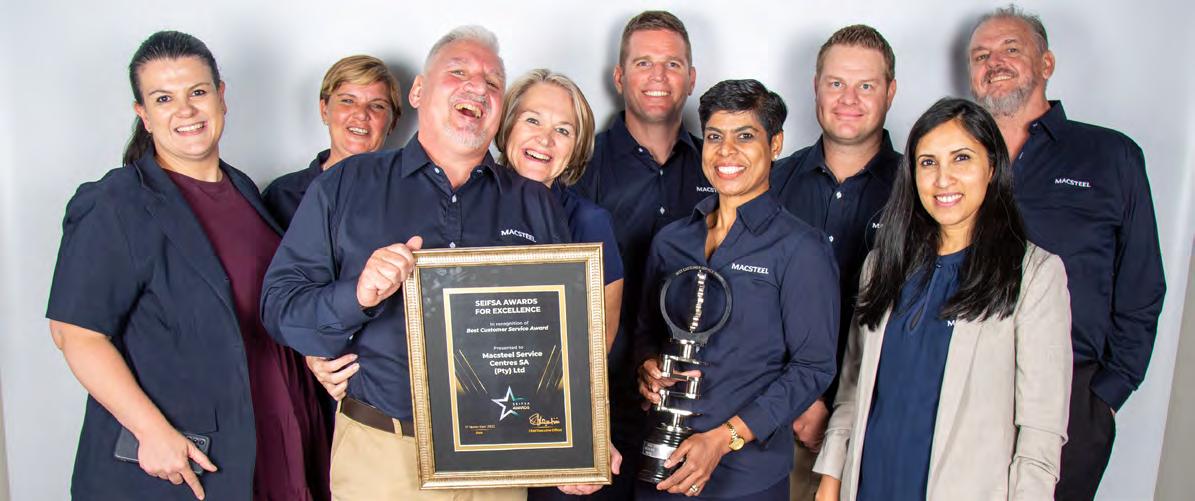
SEIFSA and MEMSA Honour the Brightest and Best in Metals & Engineering Sector Awards for Excellence Annual Event
The Steel and Engineering Industries Federation of South Africa (SEIFSA) paid homage to companies in the Annual Metals & Engineering Sector Awards for Excellence Event in Randburg. This year SEIFSA partnered with the Mining Equipment Manufacturers of South Africa (MEMSA) to celebrate the excellence of the local mining equipment manufacturing sector.
SEIFSA CEO Lucio Trentini welcomed everyone to the ceremony, saying, “We believed that, notwithstanding the many challenges faced by the sector, there are companies within the Metals & Engineering (M&E) Sector that are doing fantastic, innovative work that must be recognised and celebrated. Companies in the sector have demonstrated that they are capable of innovating, and fostering good relations with their employees, suppliers, customers and the communities around their operations. SEIFSA is not only honoured to be associated with each and every entry but, more importantly, privileged to recognise and acknowledge excellence.”
MEMSA CEO Lehlohonolo Amos Molloyi said he was happy to join SEIFSA in celebrating excellence, adding: “While most of our members form part of the steel value chain, their products and services are specifically aimed at meeting the needs of the mining industry, with its own unique and complex requirements. MEMSA are thankful to SEIFSA for allowing us to share the stage with the SEIFSA Awards for Excellence this year, we regard this event as an excellent context for the launch of our awards.
“The SA mining equipment industry is well respected for its technological and innovation advancement; however, the pandemic and lockdowns presented a test to our ingenuity and resilience. It is in the midst of these challenges that we witnessed some excellence in innovation, structuring of work and manufacturing processes, and we are proud to report that not one MEMSA member company, which was actively manufacturing for the mining industry, permanently closed its doors during or since the pandemic.”
Kobus de Beer was awarded the Lifetime Contribution to the Industry Award. He is the current Chairman of International Steel Fabricators of South Africa and the Structural Steel Export Cluster and a Commissioner on the International Trade Administration Commission of South Africa. SEIFSA CEO Lucio Trentini mentioned his “incredible career and invaluable contribution to the Metals & Engineering industry” when announcing the award.
71
Quote from Kobus de Beer
Kobus de Beer was awarded the Lifetime Contribution to the Industry Award.
De Beer expressed surprise that he had been recognised, adding: “Thank you to SEIFSA and MEMSA. I am very impressed with all the enthusiasm I have seen tonight, and I see huge potential for the future.”
Quotes
Quote from Vesconite executive Vesconite CEO Dr Jean-Patrick Leger said: “Pandemics are actually normal, what is not normal is that there was about 100 years since the last one. It will happen again, so let’s be prepared for the next one.”
Quote from Michelle Austin Michelle Austin, the group financial director at Keegor South Africa, was named Business Woman of the Year. Austin said she felt very privileged to receive the award.
“What we have focused on over the past few years is employee engagement and we have realised that this has helped us achieve what we have.”
Quote from Bell Equipment
The MEMSA Member Manufacturer of the Year Award to recognise excellence in local mining equipment manufacturer was awarded to Bell Equipment.
Bell Equipment director Bruce Ndela accepted the award and thanked MEMSA for “recognising the achievements of Bell over the years”.
Quote from Keegor’s Marno Jacobs Keegor also received the Workplace Health and Safety Award, which was sponsored by Rand Mutual Assurance (RMA).
Jacobs said: “When I started at Keegor I noticedthat the leadership team was very engaged with health and safety, and this helped a lot. We know that our biggest asset is our employees, so we invest a lot in training and ensuring they are kept safe, as one injury is too many.”
The pandemic left so much loss in its wake, and the industry lost many people to COVID-19. For the first time in the history of the SEIFSA Awards for Excellence an in-memoriam section was included to remember those who passed away.

Other awards that were presented at the ceremony include:
Best Customer Service Award: Macsteel
• Most Transformed Company of the Year: Pamodzi Engineering.
Environment Stewardship Award: MSC Technical.
• Corporate Social Responsibility: Electrolux South Africa
• Young Entrepreneur of the year Award: Caleisle Ngwenya, the director at CeeWay Engineering. Industry Apprenticeship Award: ArcelorMittal.
Other awards presented by MEMSA include:
• Customised Customer Service: ProProcess Engineering
Localised Supply Chain: Buraaq Mining Services and Rham Equipment
Manufacturing Solutions: NTGR Engineering Projects
Trentini also acknowledged the SEIFSA Sponsored Graduate Class of 2021, as well as Bursar of the Year, Karina Sewsunker, who is completing a Bachelor of Science Degree in Mechanical Engineering at the University of KwaZulu-Natal.
METAL INDUSTRIES COLLECTIVE BARGAINING SUMMIT
The Steel and Engineering Industries Federation of Southern Africa (SEIFSA) successfully hosted the Metal Industries Collective Bargaining Summit at Emperors Palace on May 24 and 25, 2023. The highly anticipated event brought together nearly 200 delegates from the Metals & Engineering Sector, including captains of industry, union leaders, senior government ministers, and expert analysts. The summit provided a platform for constructive debates surrounding the challenges faced by the sector, with a particular focus on collective bargaining practices that have shaped employer-union interactions over the past 60 years.
SEIFSA CEO Lucio Trentini highlighted the importance of collaboration between business, labour and Government, emphasising that a wellfunctioning economy requires policy alignment
among all stakeholders. Against the backdrop of a struggling economy plagued by youth unemployment, sub-investment status, stagnant growth, and the lingering effects of the COVID-19 pandemic, Trentini expressed hope that the summit would lay the foundation for a more collaborative approach to address these pressing challenges.
The summit featured a lineup of esteemed speakers and panellists from diverse backgrounds, representing business, labour and Government. They engaged in comprehensive discussions on various topics related to the collective bargaining model, labour market stability, economic growth, and the future of trade unions. Key sessions included presentations by prominent figures such the Minister of Employment, Thulas W Nxesi, who examined the implications of declining union representation in bargaining councils, while Afzul Soobedaar, Director at Perispec Consulting, analysed the relevance of the existing central wage bargaining system.
Other thought-provoking sessions addressed the democratisation of the workplace, the strategic significance of transformation, and the potential for unions to re-emerge as a united force. The summit culminated in a session on the future of trade unions and collective bargaining within an evolving industrial relations framework.
The Metal Industries Collective Bargaining Summit received substantial support from industry sponsors, including Rand Mutual Assurance, Sanlam Investments, ACTOM, Cachalia Capital, Macsteel, Standard Bank, Ninety One, Mianzo Asset Managers, Camissa Asset Managers, Colourfiled, and Invincible Valves. Engineering News was the official media partner for the event.
In his closing remarks, Trentini stressed the criticality of open dialogue between decision-makers from business, labour and Government to address the numerous challenges facing the economy. He affirmed that the Metal Industries Collective Bargaining Summit provided a valuable platform to initiate these discussions and pave the way for a brighter future.
73
SEIFSA ANNUAL GOLF DAY: REBUILDING BUSINESS RELATIONS AND CELEBRATING SUCCESS
The year 2022 marked a significant milestone for the Steel and Engineering Industries Federation of Southern Africa (SEIFSA) as we hosted the muchanticipated annual Golf Day. Against the backdrop of a tumultuous period caused by the COVID-19 pandemic, the event held at Reading Country Club in Alberton, Ekurhuleni, on Friday, 26 August, symbolised the nation’s determination to rebuild its economy and strengthen business relationships.

The CEO of SEIFSA, Lucio Trentini, expressed the profound impact of the pandemic on the economy and highlighted the crucial purpose of the Golf Day. This event served as a platform to reconnect steel companies, reignite networks, and ensure the continuous operation of businesses. With the arrival of summer and a return to normality, SEIFSA embraced the opportunity to revitalise the industry and promote collaborative growth.
A resounding success, the Golf Day attracted 144 enthusiastic golfers, all eager to partake in a day of camaraderie, enjoyment, and forging new business contacts. The tournament adopted an engaging format, utilising the American scramble drive and two store to count on all holes, except the par 3s. Participants, such as Lucky Koaho from Tshwane, embraced the event’s spirit, relishing the blend of fun and networking opportunities it provided.
Among the golfers, Phil Mayeza, known affectionately as “Son of the Soil”, shared his experience of the
event. He acknowledged the challenges posed by the fast fairways, which made achieving birdies a formidable task. However, the tournament’s format presented golfers with ample scoring chances, enabling them to showcase their skills. Mayeza appreciated the opportunity to break away from the office routine, relishing the day and commending the overall success of the tournament.
The SEIFSA Golf Day owed its triumph not only to the participation of passionate golfers but also to the unwavering support of its sponsors. Companies such as Sanlam, Meago, Summit Investments, Cachalia Capital, Interroll, Allied Steelrode, Marketing 2 The Max, Amagratings, Revive Electrical Transformers, Green Gain Africa t/a Ariscu, Global Roofing Solutions, Juexin Fire Engineering, Diesel Electric Services, Macsteel Service Centres, Unica Iron and Steel, Shereno Printers, Harsco Metals Ilanga, Columbus Stainless, Oxyon Human capital Solutions played a pivotal role in making the event an exceptional one. Their dedication and partnership contributed immensely to the success of the Golf Day, fostering a sense of gratitude and appreciation.
Undoubtedly, the SEIFSA Golf Day in August 2022 showcased the resilience and determination of Mzansi’s economy. It embodied the collective spirit of the industry as it strived to recover from the challenges posed by the COVID-19 pandemic. As SEIFSA looks back on this phenomenal event, it acknowledges the invaluable support received from golfers, sponsors and guests who not only made the day a success but also strengthened the bonds within the industry.
SEIFSA PRESIDENTIAL BREAKFAST
SEIFSA’s Call for a Business-Friendly Environment: Navigating South Africa’s Economic Challenges
South Africa’s economy has been grappling with significant challenges, ranging from load-shedding to the inflationary effects of the war in Ukraine. In light of these difficulties, the Steel and Engineering Federation of Southern Africa (SEIFSA) recognises the urgent need to advocate for a more conducive and business-friendly environment. This stance was emphasised by SEIFSA President and Chairman Elias Monage during the Annual SEIFSA Presidential Breakfast, held at the Holiday Inn Johannesburg Sunnyside Park.
Monage highlighted the critical role of business leaders, particularly SEIFSA, in representing its members and lobbying for a supportive business environment. He acknowledged that while global economic headwinds may be beyond our control, it is essential to address domestic challenges that arise from poor policy choices and economic mismanagement. SEIFSA aims to hold policymakers accountable and advocate for positive change.
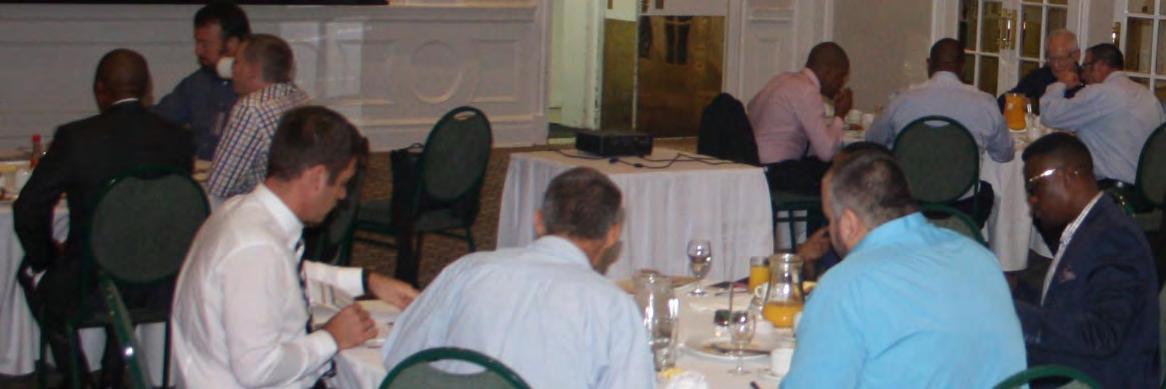
The Annual SEIFSA Presidential Breakfast serves as a platform for companies in the Metals & Engineering Sector to engage with SEIFSA’s executive team and board of directors. This year, attendees were treated to a thought-provoking discussion and insightful address by Justice Malala, a renowned political analyst and seasoned journalist. Malala delved into South Africa’s most pressing failures, including the energy crisis, water scarcity, social unrest, high youth unemployment, xenophobia, and a crisis of confidence in the Government and its institutions. He warned that the erosion of confidence in democracy itself poses a significant risk.
Despite these challenges, Malala highlighted a glimmer of hope, citing the censuring of consulting firms McKinsey and Bain as a result of revelations during the Zondo Commission on state capture. He praised the Zondo Commission as a victory for law and order and commended the judge for his exceptional work in the face of numerous obstacles.
Malala stressed the crucial role that business organisations like SEIFSA play in addressing these challenges. He called upon SEIFSA and other organisations to use their influential voices to pave a way forward for the country, presenting a path to overcome the existing obstacles.
In addition to the insightful discussions, SEIFSA took the opportunity to announce its new board during the breakfast event. SEIFSA CEO Lucio Trentini expressed confidence in the new leadership, recognising their expertise, experience and skills in providing strategic direction and guidance to the SEIFSA Executive. The newly elected board members, are expected to bring their dynamism, wisdom, and experience to further advance SEIFSA’s objectives.
As SEIFSA continues its steadfast commitment to fostering a business-friendly environment and driving positive change, it remains dedicated to advocating for its members and working towards a prosperous future for the Metals & Engineering Sector in South Africa.
SEIFSA’s board members are E Monage (President), L Trentini (CEO), T Chibanguza (COO), N Ngwenya, Pam du Plessis, T Tsehlo, E Volschenk, H Mamabolo, R Haynes, M Naidoo, M McCulloch and Pieter du Plessis.
Nuraan Alli Marketing, Sales and Communication Executive
CSection C Divisional Report

ECONOMIC AND COMMERCIAL (EC) DIVISION
The Economic and Commercial (EC) Division has continued to live by its objective to elevate the profile of SEIFSA on the national platform on economic, industrial and trade policies, with the objective of improving conditions for companies within the Metals & Engineering (M&E) Sector.
To achieve this, the EC Division continued to offer the following services: Sector-oriented economic research presentations, including an overview of the domestic and international macroeconomic environment, thus offering industry market intelligence to associations, member companies, the Government and captains of industry.
Continuous and intensified media commentary presence on selected economic variables data as released by various data agencies such as Statistics South Africa and other topics of industry importance.

77
Eleen Snyman
Deputy Manager Economics
• Maintaining, updating and expanding the Price and Index Pages (PIPS), as the pre-eminent input cost inflation modelling tool. The range of indices have been expanded to broaden the coverage to more products and services to serve the entire South African economy.
Contract Price Adjustment (CPA) and technical webinars or online training, where delegates are guided through the process of using the SEIFSA PIPS to substantiate costs and price adjustments and how to use model formulae for computation of applicable adjustments.
THE PRICE AND INDEX PAGES (PIPS)
The SEIFSA PIPS is offered by the EC Division and is currently in its 62nd year of successful publication. SEIFSA, through this service, tracks cost movements in over 260 products, including steel, labour, transport, production prices and exchange rates on a monthly basis. This information is used by parties in contracts as a basis of price adjustment negotiations.
Some of the sectors covered by this service include manufacturing, engineering and steel, construction, and transport and freight. The product is also used in the mining sector, by SOEs and all tiers of Government.
SEIFSA, an independent party to the contract, is able to provide an unbiased service that is mutually beneficial to both parties to a contract. The SEIFSA PIPS are audited bi-annually by an independent party to ensure robust and upto-date technical methodology. The SEIFSA PIPS are solely available from SEIFSA on a subscription basis. The product has successfully managed to retain a subscription base of over 1 000 clients in the 2022/2023 financial year. The highly inflationary environment, globally and domestically, also contributed to the success of the product in the year under review. Periods of elevated inflation warrant an increased frequency of contract price adjustments to avoid input costs eroding margins. Inflationary pressures have continued to persist, particularly on the back of the Russia-Ukraine war and supply chain disruptions globally. We expect to keep creating a supportive environment for the PIPS product.
CONTRACT PRICE ADJUSTMENT (CPA) WORKSHOPS
The CPA workshop provides a systematic explanation of the full range of tools used in contract price adjustment, practical application
of the tools, and building inflation models and formulas. With the COVID-19 pandemic, SEIFSA adapted to the “new normal” and not only offered these training courses on a face-to-face or in-house basis, but also offered all its training sessions via webinars. The web-based training platform provides a safe means for prospective delegates to train comfortably without worrying about the demands social distancing. SEIFSA also provided in-house training to 11 companies, nine of which were face-to-face sessions at the company offices and two via webinar. We have seen a notable increase in companies opting for in-house training, which allows companies to have more delegates attending at any given time while also being less logistically disruptive to operations.
The public CPA workshops hosted at the SEIFSA office also did exceptionally well and exceeded budget.
CONTRACT PRICE ADJUSTMENT (CPA) CONSULTANCY
The EC division noted considerable traction in this offering in the year under review. The offering involves our CPA experts assisting parties to a contract with the calculation of their contract price adjustment. This applies to both complex and simple CPA provisions. We have noted significant interest in this offering, even for those companies that have CPA expertise within their organisations, because the calculation is compiled by an external party and submitted on a SEIFSA letterhead, which can be used as motivation for the price adjustment.
Eleen Snyman Deputy Manager Economics
78
Economic & Commercial
Economic & Commercial Services
To provide input into the national discourse on economic, trade and commercial matters aimed at improving business conditions in the Metals & Engineering Industry
79
 CSection C Divisional Report
CSection C Divisional Report
INDUSTRIAL RELATIONS SERVICES

GAZETTAL OF THE MAIN AGREEMENT
The Main Agreement 2021/2024 was extended to non-parties in terms of Section 32(1) of the Labour Relations Act (LRA) on 17 October 2022, by Ministerial proclamation. In terms of the extension, all employers falling within the scope of the collective agreement are legally obliged to observe the terms and conditions of employment.
Opponents to the extension of the Main Agreement made an application to the Labour Court to interdict the extension of the agreement and set aside the decision by the Bargaining Council to apply for the extension. The matter was duly opposed by signatories. The Labour Court ruled against the application. In response, the opponents sought to appeal the matter, and the appeal was dismissed. The matter, failing again in the Labour Appeal Court, has been referred to the Constitutional Court.
81
Vuyiswa Miya-Mokwana Industrial Relations Executive
A review application has since been made to the Labour Court by the same opponents seeking to review and set aside the Minister of Employment and Labour’s decision to extend the main agreement to non-parties. As at the date of preparing this report no date has been set for either matter to be heard. In the interim the Main Agreement continues to have legal force and effect and will expire on 30 June 2024.
TRAINING
With the relaxation of Covid-19 regulations, the division experienced an increase of in-house and public training over the course of the year. Our offerings are tailored for companies’ specific needs. In March the division hosted a successful seminar titled “Looking through the 2023 crystal ball”. The seminar was attended by individuals in the industry and received rave reviews.
During the year, the division conducted numerous in-house and webinar training courses on the newly promulgated Code of Good Practice on the Prevention and Elimination of Harassment in the Workplace. The division’s Main Agreement and Job Grading workshops saw a sharp increase in demand after the extension of the agreement.
INDUSTRY MATTERS
Staff in the division have been appointed on industry panels as board members and committee members. Through these appointments the division contributes to decisions affecting the industry. In addition, with the assistance of employer officials nominated by their respective associations, SEIFSA ensures that various
mandates formulated by the membership are implemented and realised.

Loadshedding challenges experience by the country directly affected the industry. Companies found that intermittent electricity supply meant it was difficult to schedule work shifts. The division has assisted companies in implementing shorttime, lay-off and retrenchment interventions in line with the provisions of the Main Agreement and related labour laws. This has resulted in certain instances in jobs being retained as employees and employers understand the need to work creatively in meeting these challenges.
Companies continue to rely on the division and its alliance partners to assist in their industrial relations issues, from investigating suspected misconduct to chairing disciplinary hearings and appeals. Where a dismissal results in a referral to the bargaining council, the division has assisted in conciliations and arbitrations. Matters referred to the Labour Court are managed by trusted alliance partners consisting of attorneys and advocates. The division handles various industrial relations queries from the industry. Where the matter is complex, a consultation is arranged.
82
INDUSTRIAL RELATIONS SERVICES
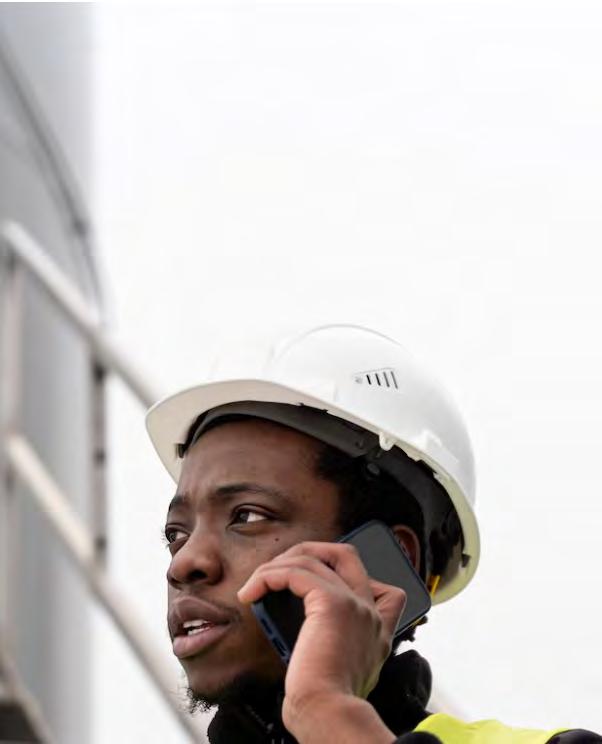
The Federation continues to provide a comprehensive and professional range of services to member companies. These include:
• Industry Job Grading Service
SEIFSA provides a comprehensive job grading service - in terms of which grading specialists are available to observe all the operations and jobs performed at individual member companies and then grade these in accordance with the Main Agreement technical schedules. This has proved to be a valuable service to members in countering the pressure exerted by shop stewards and employees to have workers’ jobs graded.
• Arbitration Representation Service
The SEIFSA member company arbitration representation service continues to provide a professional and cost-effective benefit to member companies. This service includes evaluating and preparing management’s case prior to arbitration, interviewing and preparing witnesses for the
hearing, presenting management’s case, crossexamining witnesses, preparing legal arguments, and formulating and presenting the opening and closing statements at the formal arbitration hearings at the industry’s Centre for Dispute Resolution and at the CCMA.
• Chairing Disciplinary Enquiries and Appeals
SEIFSA continues to provide qualified and experienced persons to chair, manage and conduct in-company disciplinary enquiries and disciplinary appeal proceedings.
• Assistance in Dealing with the Bargaining Council
SEIFSA provides advice and assistance to member companies on a range of issues related to the bargaining council, including the following:
• The interpretation, application and implementation of the bargaining council’s collective agreements; and The formulation and processing of wage and other exemption applications.
83
GENERAL INDUSTRIAL RELATIONS SERVICES
SEIFSA’s staff continue to provide advice and assistance to member companies on a comprehensive range of industrial relations issues, including:
• Dispute resolution
Legal advice and assistance
• Application of employment conditions
Formulation of employment equity plans and reports
• Dealing with strike action
Advising on the legitimacy of medical certificates
• The interpretation and application of all labour legislation.
INDUSTRIAL RELATIONS PUBLICATIONS
A range of industrial relations publications is available to the SEIFSA membership. These include the following general management guideline publications:
• A Summary of the Key Elements of the Labour Relations Act

• A Practical Guide to Implementing Retrenchment Law at the Workplace
• HIV and Aids in the Metal and Engineering Industry
Reduce and Manage Absenteeism in your Workplace
Disciplinary Policy and Code
• Dealing with E-mail and Internet Abuse at the Workplace
Employment Contracts and Labour Broking Arrangements
Dealing with Sick Leave and Sick Leave
Abuse at the Workplace
• Dealing Effectively with Theft, Unauthorised Possession and the Searching of Employees
84
MAIN AGREEMENT PUBLICATION
SEIFSA released the latest version of the publication: The Main Agreement Handbook for the Metal Industry, 2023 in June. This annual publication is an easy-to-read summary of the industry’s Main Agreement.
The latest edition of the associated Main Agreement Wall Chart was also published in June. It summarises the key sections of the Main Agreement in a poster format.
INDUSTRIAL RELATIONS TRAINING
SEIFSA continues to present a comprehensive range of practical industrial relations training courses, seminars and workshops, including:
• BCEA vs The Main Agreement for the Metal & Engineering Industries
• Code of Good Practice on the Prevention and Elimination of Harassment in the Workplace
• Grading Masterclass
• Implementing Retrenchments, Short-time and Layoffs correctly
• Initiating and Chairing Disciplinary Hearings
• Key Aspects of Labour Law – Overview of the LRA and the BCEA
• Labour Law Update Seminar
• Managing Intoxication in the Workplace – Alcohol and Cannabis Marijuana
• Managing Leave, Sick Leave and Absenteeism in the Workplace

• Managing Misconduct in the Workplace
• Shop Steward Training – Building Healthy Workplace Relationships
• Strike and Lockout Management
• The A-Z of the Main Agreement
• The Main Agreement – Wages and Conditions of Employment
85
BUSA STANDING COMMITTEE ON SOCIAL POLICY
SEIFSA is represented on the BUSA Standing Committee on Social Policy. Regular meetings of the committee were held during the course of the year and matters discussed included the following:
The ongoing labour law review process at Nedlac
• The Nedlac negotiations on the proposed regulation of the changing nature of work and atypical forms of employment practices in South Africa
• The proposed social security and retirement reform review
• Business representations on the National Health Insurance Act
NEDLAC LABOUR MARKET CHAMBER
SEIFSA’s Chief Executive Officer serves as a business representative on Nedlac’s Labour Market Chamber (LMC). The LMC provides a forum where senior government representatives (from the Department of Labour), organised labour (from COSATU, SAFTU and FEDUSA) and organised business (from BUSA) are able to engage on proposed amendments to labour legislation and planned changes to the country’s labour market policy.
NEDLAC NATIONAL DEMARCATION COMMITTEE
The SEIFSA Chief Executive Officer serves as a business representative on Nedlac’s National Demarcation Committee. This committee is a national forum where applications for the registration and variation of scope of bargaining and statutory councils are considered and determined, and draft arbitration awards related to demarcation disputes are reviewed.
Vuyiswa Miya-Mokwana Industrial Relations Executive
86
Industrial Relations
Industrial Relations Services
To resolve industrial relations problems as quickly and as cost effectively as possible, minimising legal risk, labour unrest and achieving practical outcomes
87
CSection C Divisional Report

HUMAN CAPITAL & SKILLS DEVELOPMENT
SEIFSA, acting through direct representation on the Business Unity South Africa (BUSA) Standing Committee on Education and Training (SUB-CET), plays a major role in co-ordinating the views of business and lobbying for employerfriendly skills development policies and approaches at national level.

89
Zizile Lushaba Human Capital and Skills Development Executive
The Human Capital & Skills Development (HC&SD) Division is represented on and engages in the following platforms:
merSETA Board;
• merSETA Metal Chamber;
• merSETA Regional Committees;
• BUSA Social & Policy Transformation Committee;
• BUSA Sub-Committee on Education & Training; and the Sub-Committee for Skills Strategy in Economic Reconstruction and Recovery Plan (ERRP);
• National Artisan Development Advisory Body (NAMB);
• Quality Council for Trades and Occupations (QCTO) and;
• Steel Master Plan – Human Resources and Transformation Workstreams.
and Training (DHET) is on employment stimulus to create jobs and support livelihoods.
Short term in nature, the Economic Reconstruction and Recovery Skills strategy is designed to create a balance between the short- and long-term skills needs of the country and ensure that the skills system is strengthened with its implementation. As stated in the ERRP, South Africa is now on the threshold of an important opportunity to imaginatively, and with a unity of purpose, reshape its economic landscape.
Skills development is one of the identified enablers to ensure the successful implementation of the plan. The focus on skills is wide-ranging and entails optimising the regulatory environment, structural reforms to boost education and skills development and a concerted effort to build the skills base required by our changing economy ahead of global technology advances, to ease and cost of doing business and to create greater levels of inclusion for young people, women and persons with disabilities.
In order to effectively represent the interests of the membership and to advance the HC&SD agenda in the sector, it is critical that SEIFSA continues to play an active role in these various platforms.
The after-effects of the COVID-19 pandemic and 2021 July unrest are just two examples of a collision point of the myriad technological, political, economic and social challenges that the sector faces. This still creates a high degree of uncertainty where the future of education and training (supply) and the nature of the job market (demand) is concerned.
One of the key priority areas of focus on the Economic Reconstruction and Recovery Plan tabled by the Department of Higher Education
The list of critical skills, occupations in high demand and priority occupations are some of the critical enablers of the economic recovery and reconstruction effort as they identify skills needs across the economy and assist to align skills planning with economic planning, ensure that skills are not a constraint on economic growth and promote the use of labour market intelligence for skills provisioning.
The DHET supported the Department of Home Affairs (DHA) in the development and application of a methodology to identify occupations for the critical skills list (CSL). The primary aim of the CSL is to identify occupations that are in shortage and unlikely to be developed domestically in time to prevent the obstruction of economic growth potential in the short to medium term thus forming the basis for the issuance of critical skills visas to critically skilled foreign nationals. This list was gazetted by the DHA in August 2022.
90
The following four elements of the labour market and economic information were very beneficial in the construction of the CSL:
• As part of the developing skills strategy for ERRP in 2021, Sector Education and Training Authorities (SETAs) were asked to submit occupations they have identified as being in shortage in their sections.
• Occupations that were previously not deemed as strategically important but were identified as important to the ERRP were added to the list.
• The usage of unemployed individuals according to the Department of Employment and Labour’s Employment Services database as an exclusion criteria was justified.
• Lastly, the impact of the COVID-19 pandemic on occupational demand was also taken into consideration.
The Economic Reconstruction and Recovery Skills Strategy is located within the broader skills planning arsenal while making sure that the emergency responses are sustainable for the skills system in the long term. This strategy specifically addresses the interventions that are required to ensure the successful implementation of the ERRP.
It assigns specific roles to key institutions within the skills sub-system, including SETAs, to concentrate on supporting skills planning, industry engagement, funding and workplacebased learning, the National Skills Fund to identify critical areas for funding support, targeting unemployed youth and vulnerable groups, particularly in rural parts of the country, and QCTO tasked with ensuring that qualifications are developed in response to demand.
Though the strategy puts focus on the skills subsystem playing an enabling role, the entire post-
school education and training (PSET) system, which includes universities and colleges, will contribute to delivering the plan. Additionally, the strategy seeks to rally the support of government departments such as Trade Industry and Competition, Employment and Labour, Public Works and Infrastructure, Agriculture and Rural Development, Small Business Development and Telecommunications as well as the private sector to respond to, support and ensure there are no skills constraints in the implementation of the ERRP.
Economic growth needs to accelerate in a more inclusive manner to create jobs. Job creation is severely affected by the current economic state and focus will therefore need to be on retaining jobs and re-skilling the current workforce to support an economic recovery in a new reality.
Skills development and job creation are key drivers of equality and therefore remain ways to measure transformation. SEIFSA member companies invest in transformation and the broad-based black economic empowerment (B-BBEE) skills development element by spending on training and development in a number of interventions that include learnerships, bursaries, apprenticeships, internships and adult education. The industry also supports training and skills development in the communities where operations are located, helping to make socioeconomic growth possible.
The CSL shows a substantial number of technical skills as being categorised as critical and in shortage. The Metals & Engineering( M&E) Sector is highly dependent on technical skills, this makes it even more imperative that the views of the membership are presented and heard to influence transformation, human capital and skills development, and regulatory environment in a way that does not negatively impact the sector’s business viability and sustainability.
91
EDUCATION AND TRAINING ADVISORY COMMITTEE (ETAC)
The SEIFSA Education and Training Advisory Committee (ETAC) is a forum that usually meets to discuss skills development and training policy matters, including those relating to the DHET, merSETA, NAMB, BUSA, SAQA, QCTO and NSDP. The membership of SEIFSA’s Education and Training Advisory Committee has seen a decline. This, as reductions in training budgets and delivery constraints have had a negative impact on skills development in general. Taking everything into consideration, we should see an increase in attendance for such activities in the year ahead.
HC&SD TRAINING PUBLIC WORKSHOPS
The division provides a range of development opportunities for both member and nonmember companies on a range of pertinent and related topics in the field:
• Human Resources Strategy & Alignment; Employee Value Propositioning;
• Compliance-related training in Employment Equity & Skills Development; Human Resources Management & Development;
• Transformation and B-BBEE Scorecard Management; and
• HR Policy Development & Management.
In-House Workshops
Customised in-house training can be delivered at members’ workplaces as face-to-face training as well as online as webinars.
Benefits include:
• Lower cost of training delivery;
• Customised training; Team building opportunities; and
• Increased convenience – less travel time and costs.
Consultancy
SEIFSA offers a comprehensive and professional consultancy service as specialists in advisory, consulting and projects management in the fields of Skills Development, B-BBEE and Human Capital to our members. We customise a range of fit-for-purpose and success development programmes and solutions that meet the unique needs of our various clients, their employees and stakeholders.
SEIFSA TRAINING CENTRE (STC)
The STC is an accredited provider of apprenticeships, recognition of prior learning, trade testing, accredited learnerships, skills programmes and short courses in engineering, safety, artisan development, technical, production, management, services and related non-technical disciplines across a number of sectors. The new, improved SEIFSA Training Centre, launched on July 22 2022, also offers 4IR-related skills such as robotics and 3D printing to meet industry demands. These skills will be taught using e-learning, virtual reality and e-assessments. While apprenticeships and artisan training will remain core offerings, the big leap is around going into business incubation. The STC is poised to become a centre of excellence for training within the M&E industry and is repositioned to become a premier comprehensive, high-quality skills development solutions centre, with offerings starting from entry-level artisan training to advanced skills-based post apprenticeship artisan development programmes.
In addition to this, the STC will offer accredited and non-accredited courses and other training to equip students with the non-technical skills needed for career progression.
92
SEIFSA Training Centre
SEIFSA Training Centre
A specialised apprentice and trade test centre, providing advisory consulting and project management skills programme


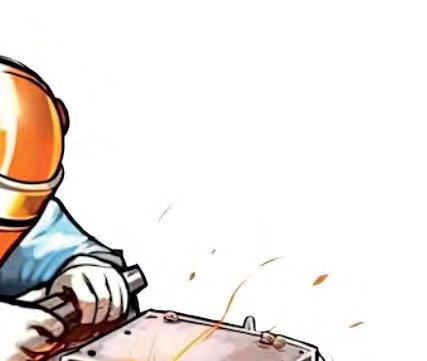

93
HUMAN RESOURCE OVERSIGHT STATISTICS
The competence, expertise and agility of our team are critical to the success of the organisation. High performance, staff connectivity, safety, trust and confidence are key drivers for effective delivery of our mandate and objectives.
OUR WORKFORCE
Our staff complement was 19 as at 30 June 2023. The recruitment processes focused extensively on job culture fit to ensure retention in line with our recruitment and selection policy.
TRAINING COSTS
SEIFSA encourages continuous training and development for employees and funds training or studies relevant to its core business.
EMPLOYMENT AND VACANCIES
The SEIFSA Organogram reflects a revised budgeted headcount, revised positions, reporting lines and scope of responsibility of the SEIFSA employees. During the year under review, SEIFSA has had four resignations, namely:
• Two employees from the skilled technical and academically qualified occupational level; One employee from the professionally qualified and experienced specialists’ occupational level; and
• One employee from the senior management occupational level.
During the period under review SEIFSA promoted two employees into existing vacancies and filled three vacancies with external candidates focusing extensively on job culture fit.
POLICY DEVELOPMENT
During the period under review, Human Resources policies were updated and will be approved, implemented and rolled out through a staff communication session to ensure that employees have a better understanding of these approved policies and procedures.
FUTURE HUMAN RESOURCES OBJECTIVES
SEIFSA envisions itself as a professional and capable organisation grounded in ethical leadership, best practice, governance and management, appropriate competencies, good employee experience supported by policies, systems, processes and fair remuneration, performancebased delivery of products and services and best practice consequence management.
TRANSFORMATION
We as SEIFSA are proud to announce that we are a Level 2 contributor as a Qualifying Small Enterprise for B-BBEE. Accordingly, we plan on improving this B-BBEE level and to maintain our transformation goals.
Zizile Lushaba Human Capital & Skills Development Executive
94
Human Capital & Skills Development Services
To lobby for employer-friendly policies at national, provincial and industry level and represent member interest on different platform and forums in the industry
Human Capital &Skills Development
95
CSection C Divisional Report

SAFETY, HEALTH, ENVIRONMENT & QUALITTY
Overcoming Challenges for a Compliant and Safe Workforce
SEIFSA is committed to providing comprehensive Safety, Health, Environment, and Quality (SHEQ) services to its affiliated membership in the metal industries. However, we have faced some difficulties beyond our control over the past couple of years. Despite these obstacles, SEIFSA is committed to ensuring the compliance and safety of our membership’s workforce.

97
Nuraan Alli Marketing, Sales and Communications Executive
SEIFSA recognises the importance of maintaining compliance with safety regulations and understands the significant impact it has on the well-being of employees. A safe workforce not only protects individuals but also contributes to increased productivity and overall business success. SEIFSA remains steadfast in its efforts to address these challenges and provide effective SHEQ solutions.
SEIFSA understands that a safe and compliant workforce is in the best interest of all stakeholders.
Accordingly, SEIFSA reaffirms its commitment to providing effective SHEQ services to the metal industries. We are determined to forge a successful partnership that will enable clients to maintain compliance, prioritise safety and create a work environment that promotes the well-being of all employees.
Nuraan Alli Marketing, Sales and Communication Executive
98
Safety, Environment
Safety, Health, Environment & Quality Services
To assist organisations in implementing holistic SHEQ services and improving the safety of companies in the Metals & Engineering Industry
99
Safety, EnvironmentHealth,& Quality
 DSection D SEIFSA Board, Executive and Staff
DSection D SEIFSA Board, Executive and Staff
NON-EXECUTIVE
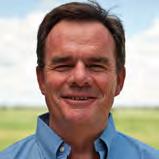






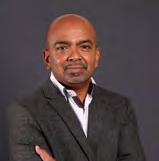

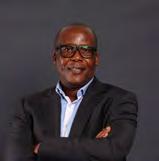
EXECUTIVE


101
E. Monage President and board Chairman
Tumi Tsehlo Non-Executive Director
Mervyn Naidoo Non-Executive Director
Peter Du Plessis Vice President
Pam Du Plessis Non-Executive Director
Lucio Trentini Chief Executive Officer
Nonhlanhla Ngwenya Vice President
Ernest Volschenk Non-Executive Director
Ryan Hayness Non-Executive Director
Honey Mamabolo Non-Executive Director
Malcolm McCullough Non-Executive Director
Tafadzwa Chibanguza Chief Operations Officer
DIRECTORS
DIRECTORS
TEAM SEIFSA
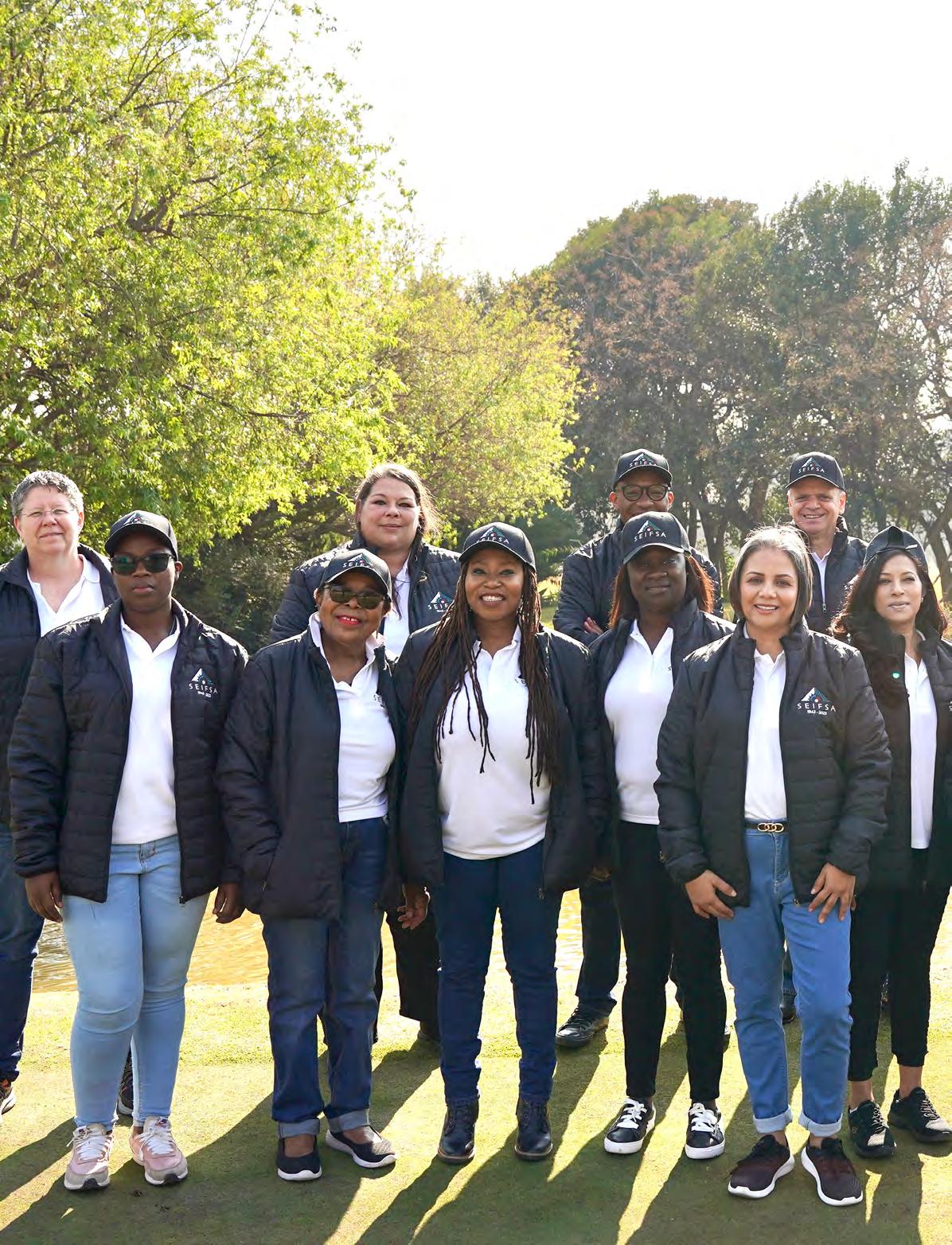


www.seifsa.co.za Tel: +27 11 298 9400 Email: Info@seifsa.co.za











 THE STEEL MASTER PLAN
THE STEEL MASTER PLAN

























































































 CSection C Divisional Report
CSection C Divisional Report









 DSection D SEIFSA Board, Executive and Staff
DSection D SEIFSA Board, Executive and Staff














